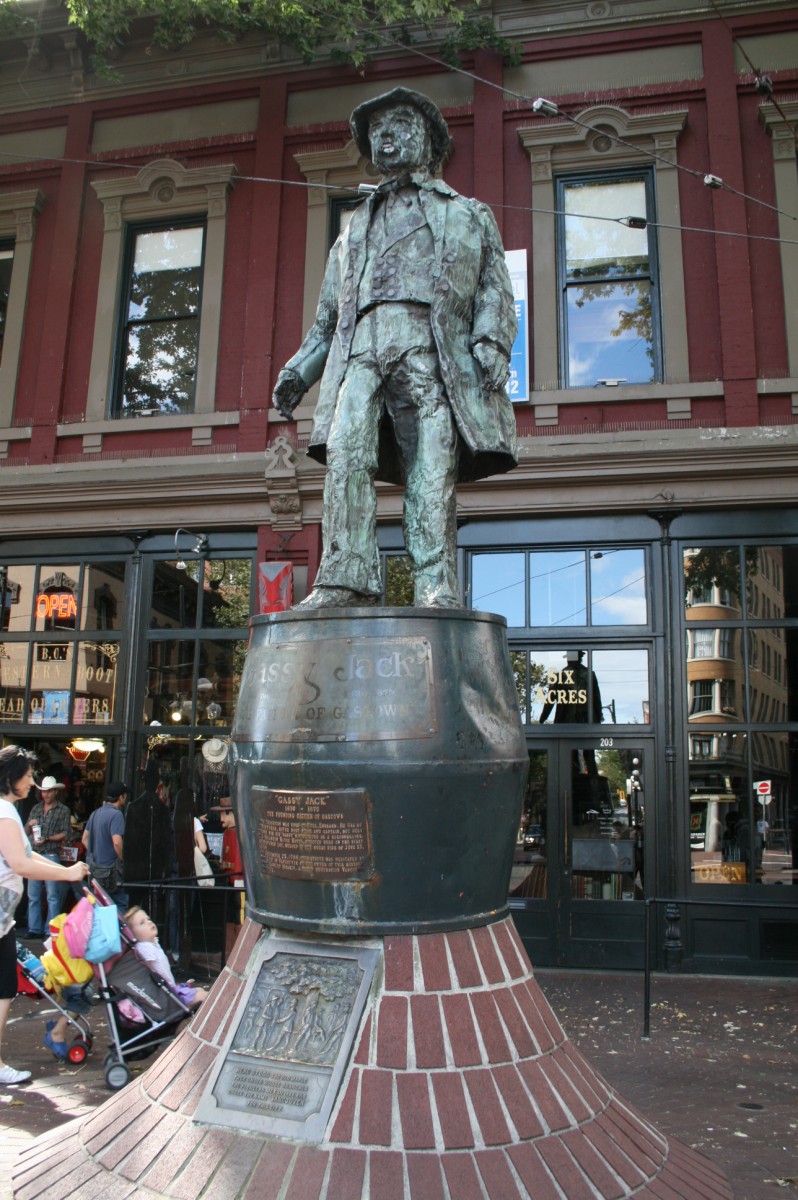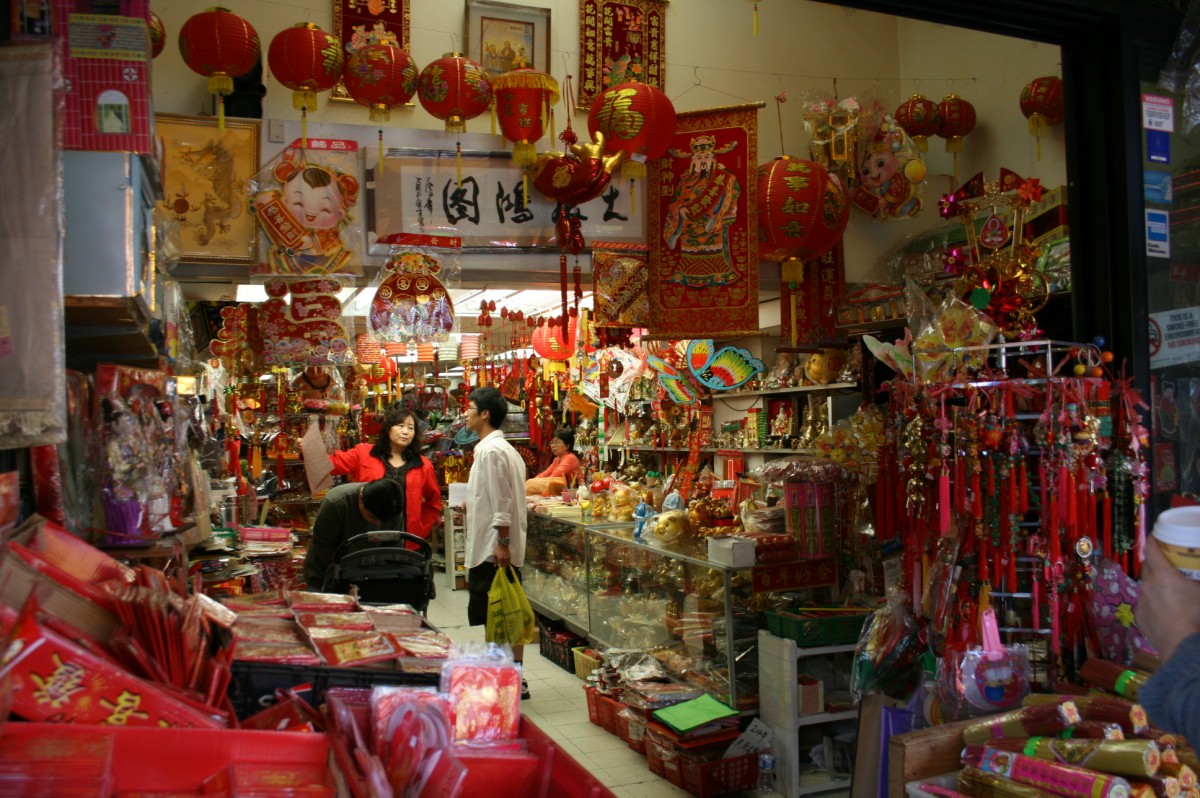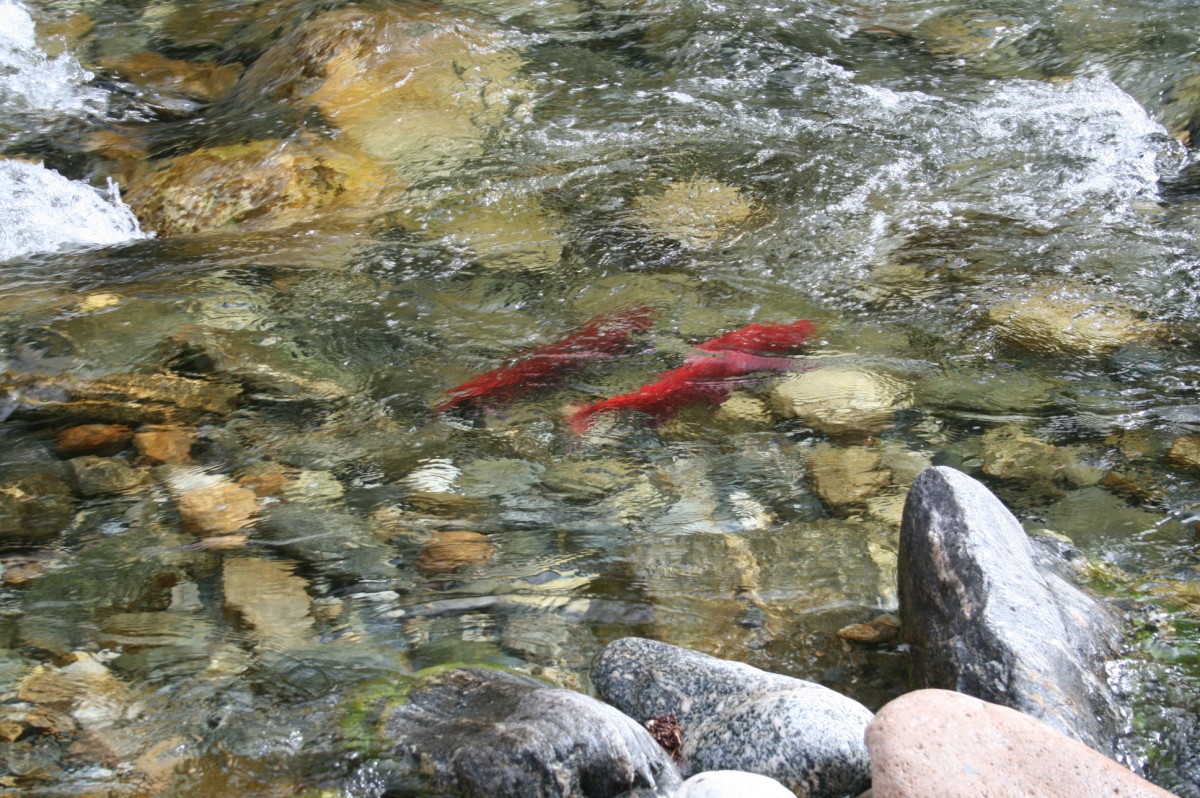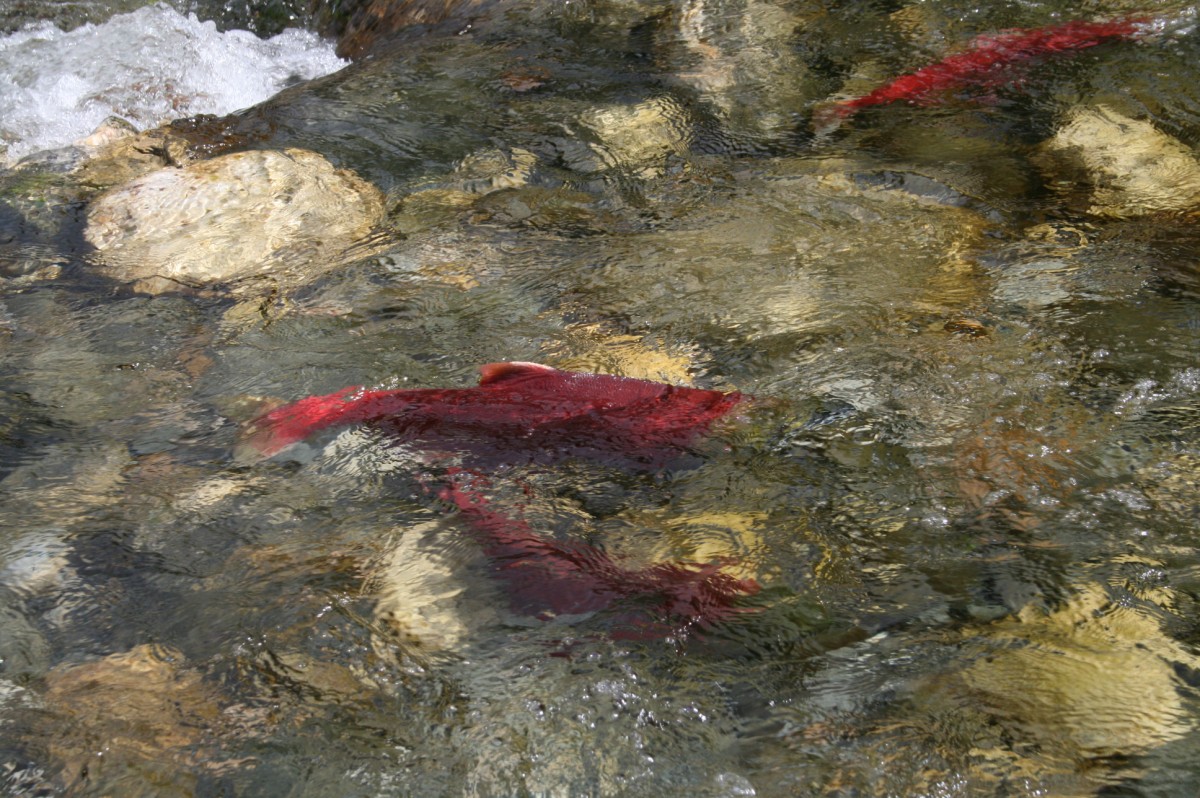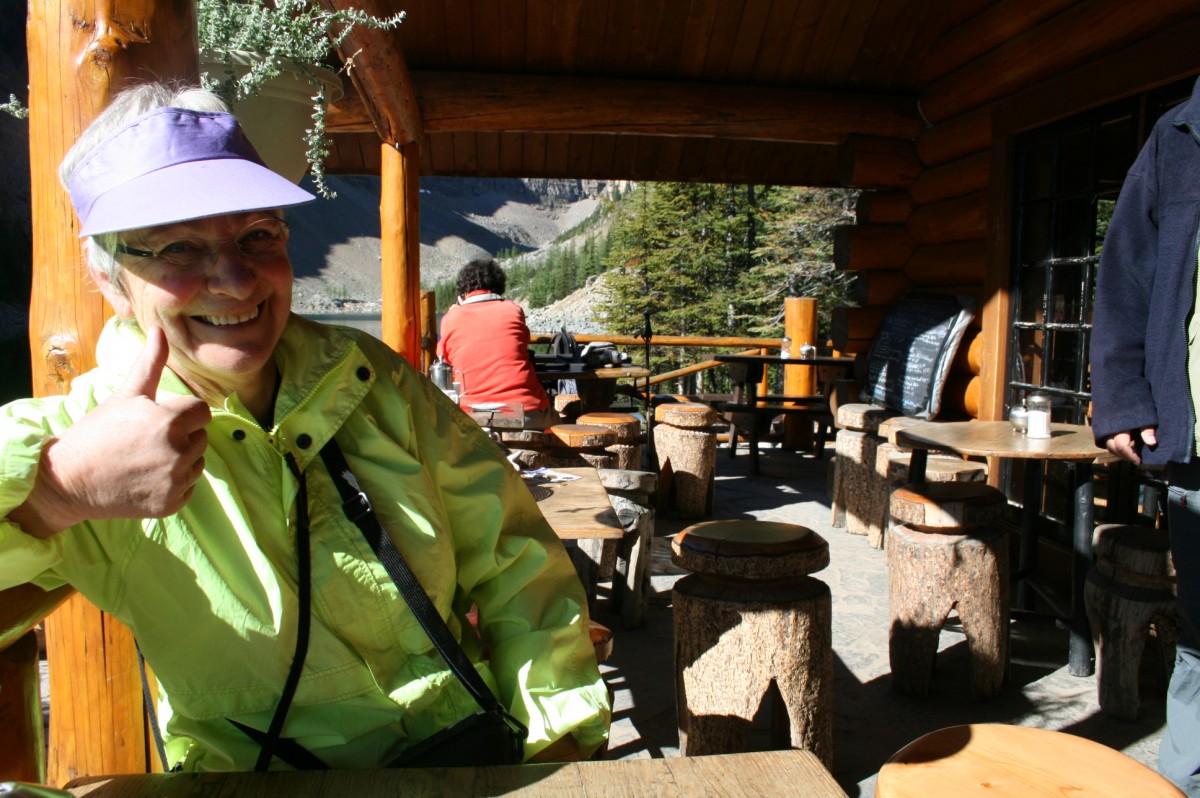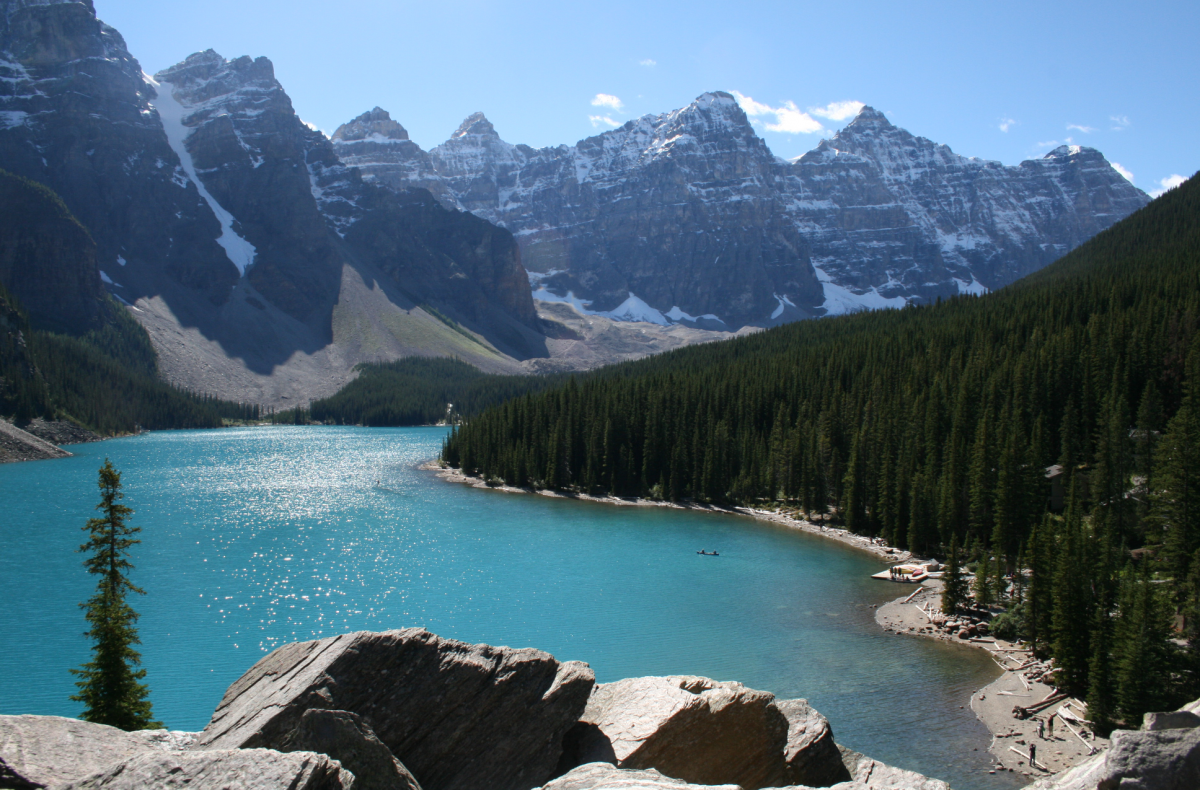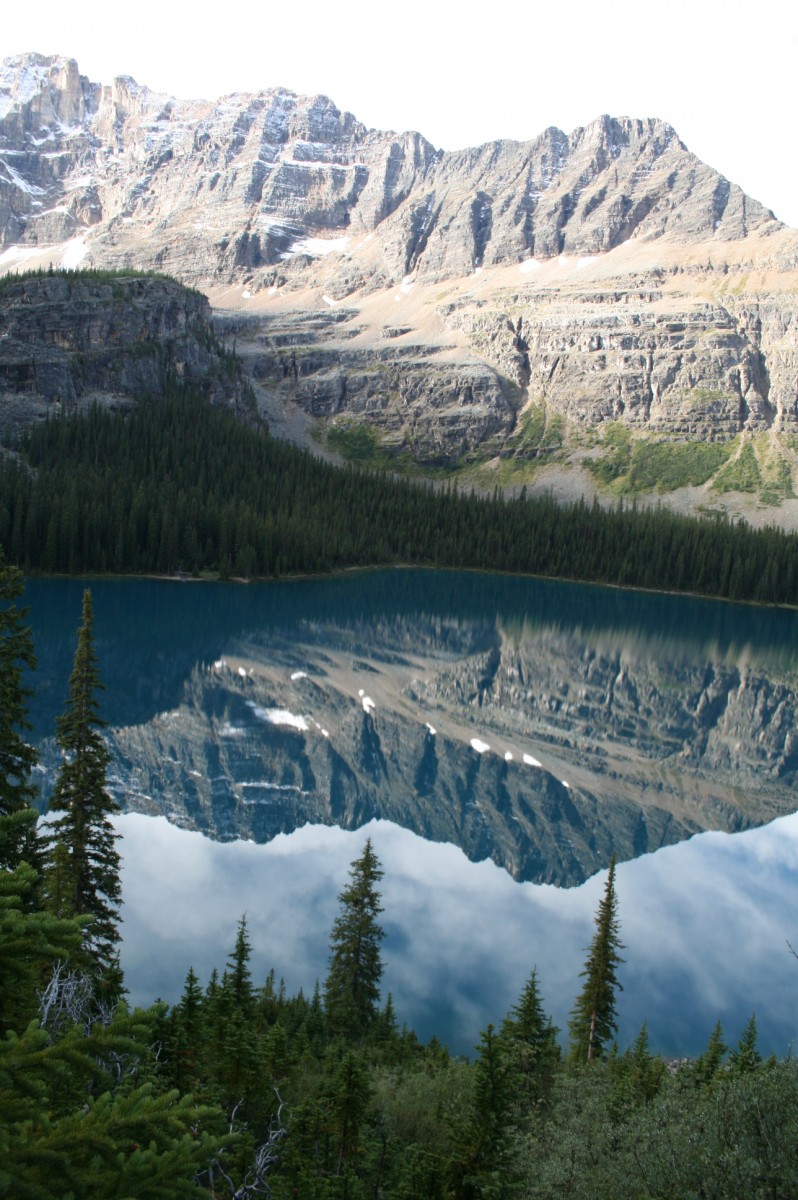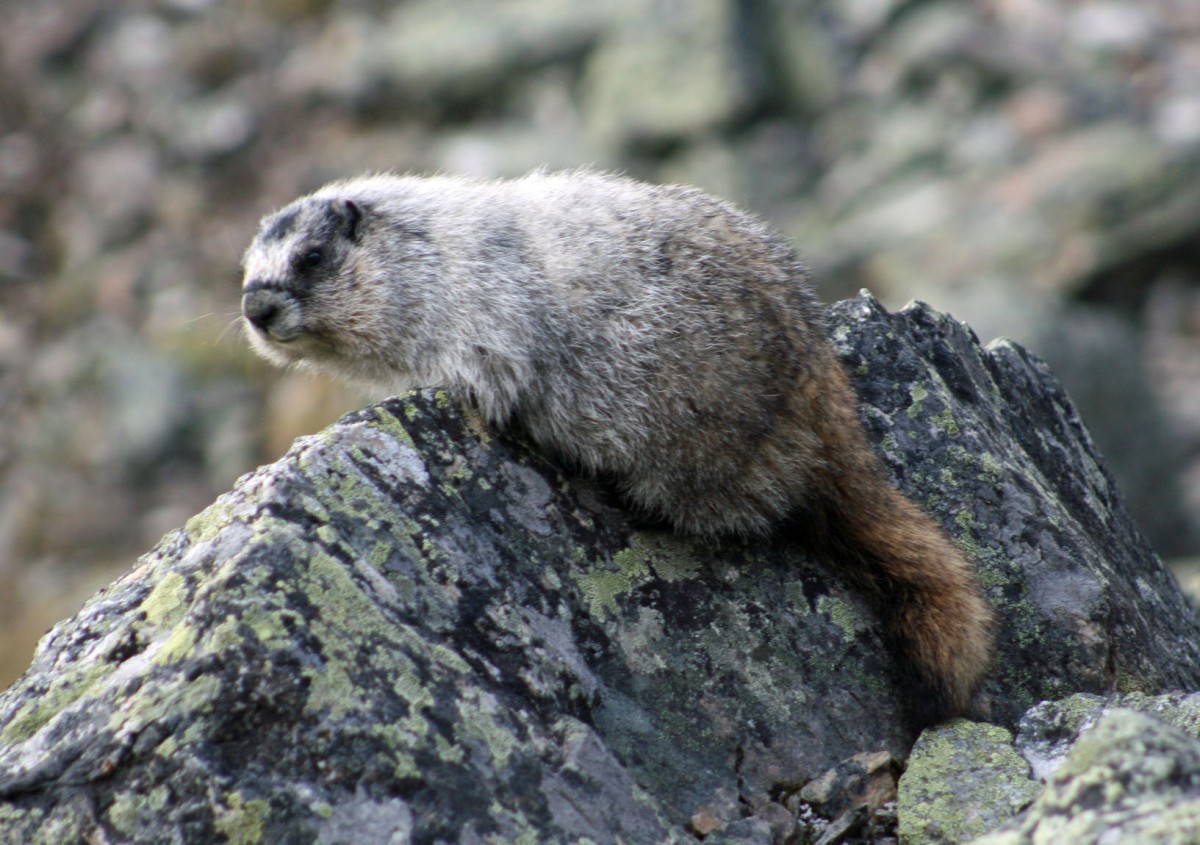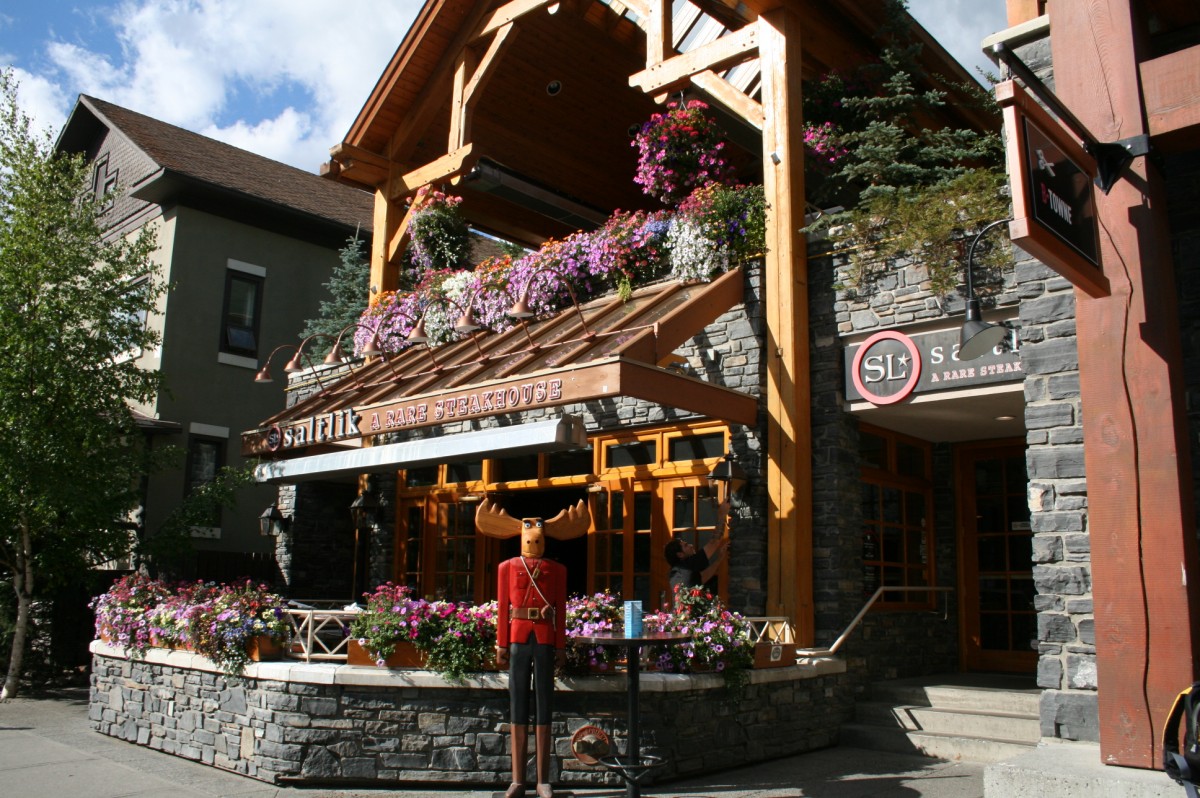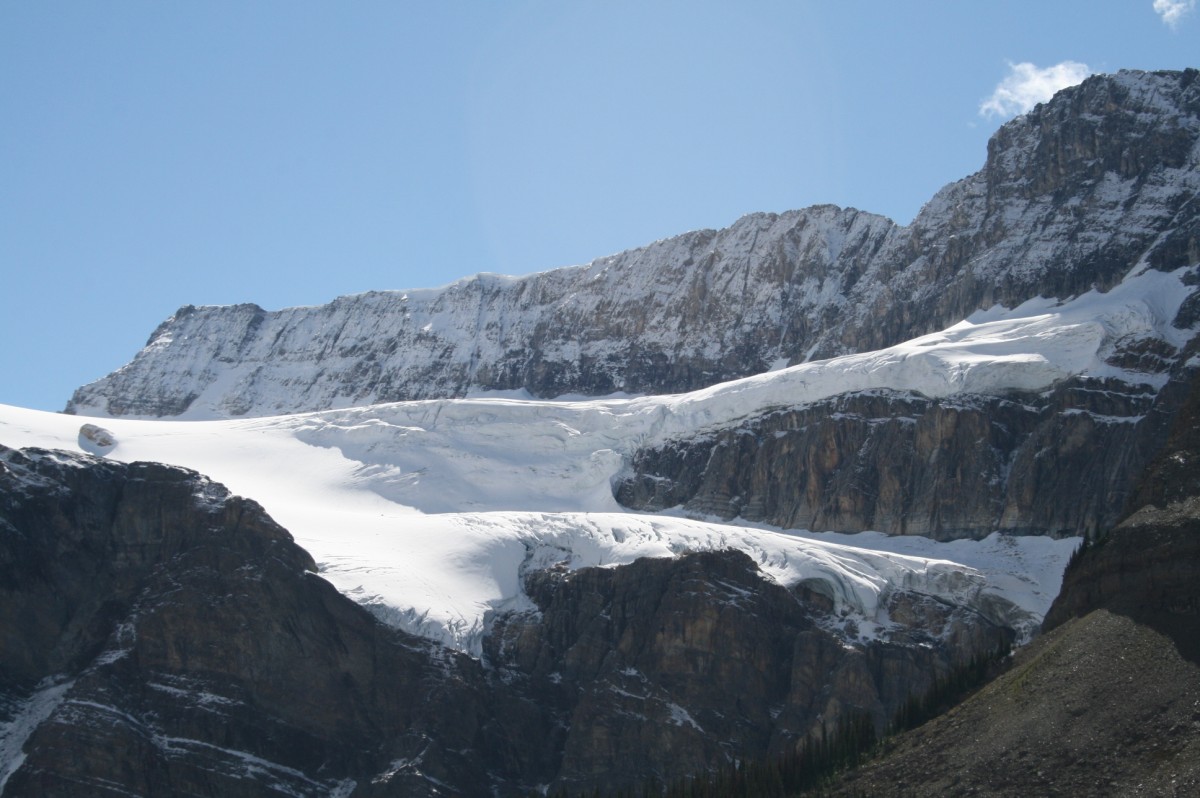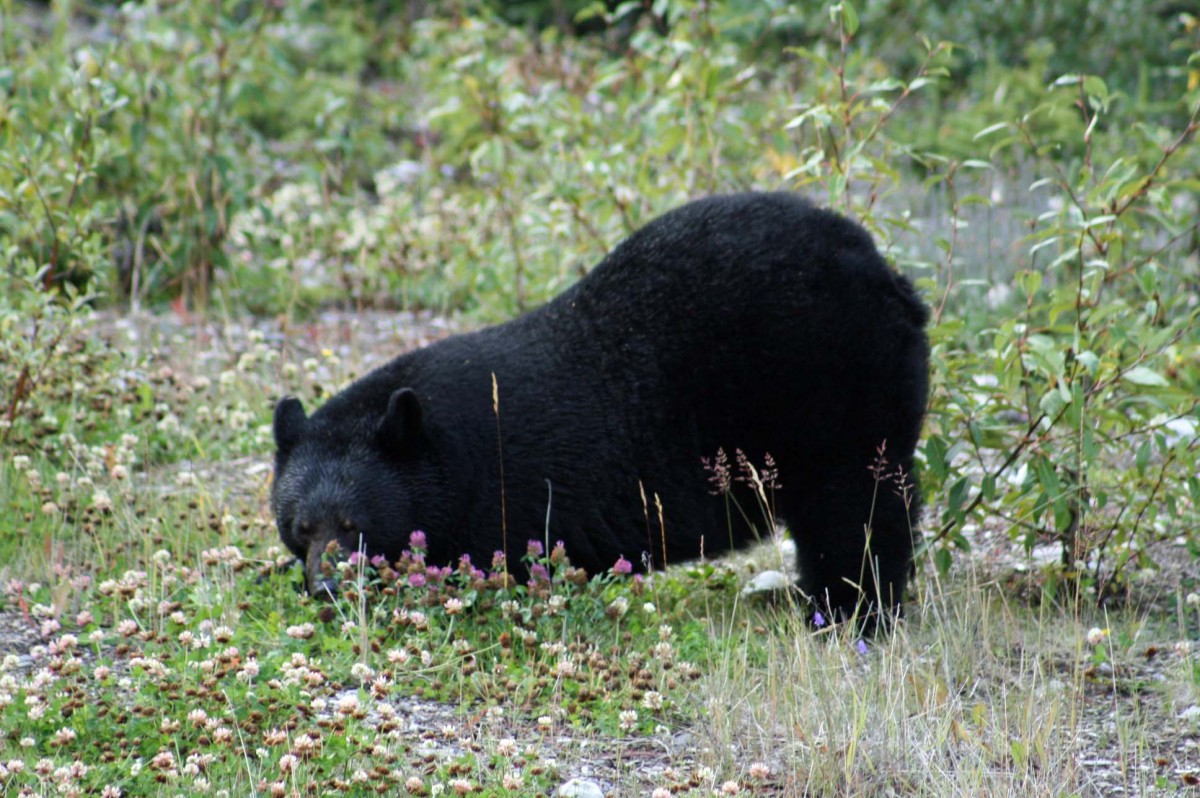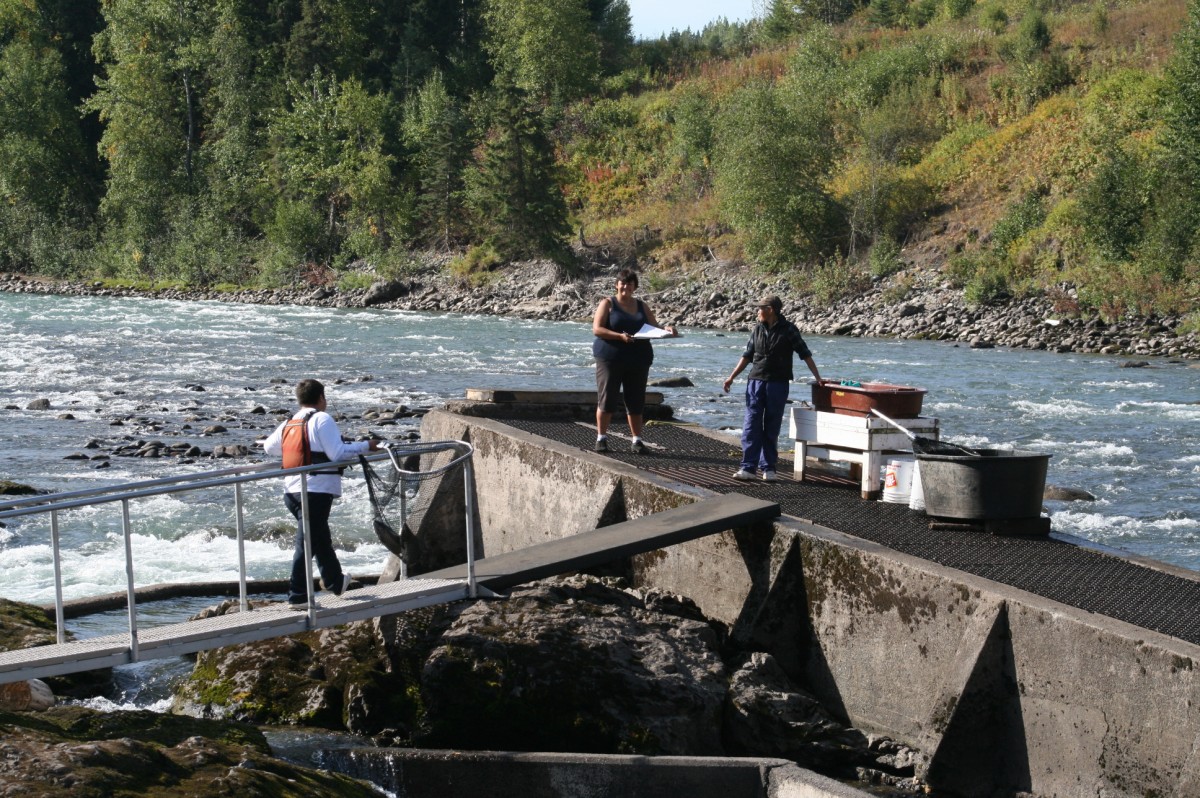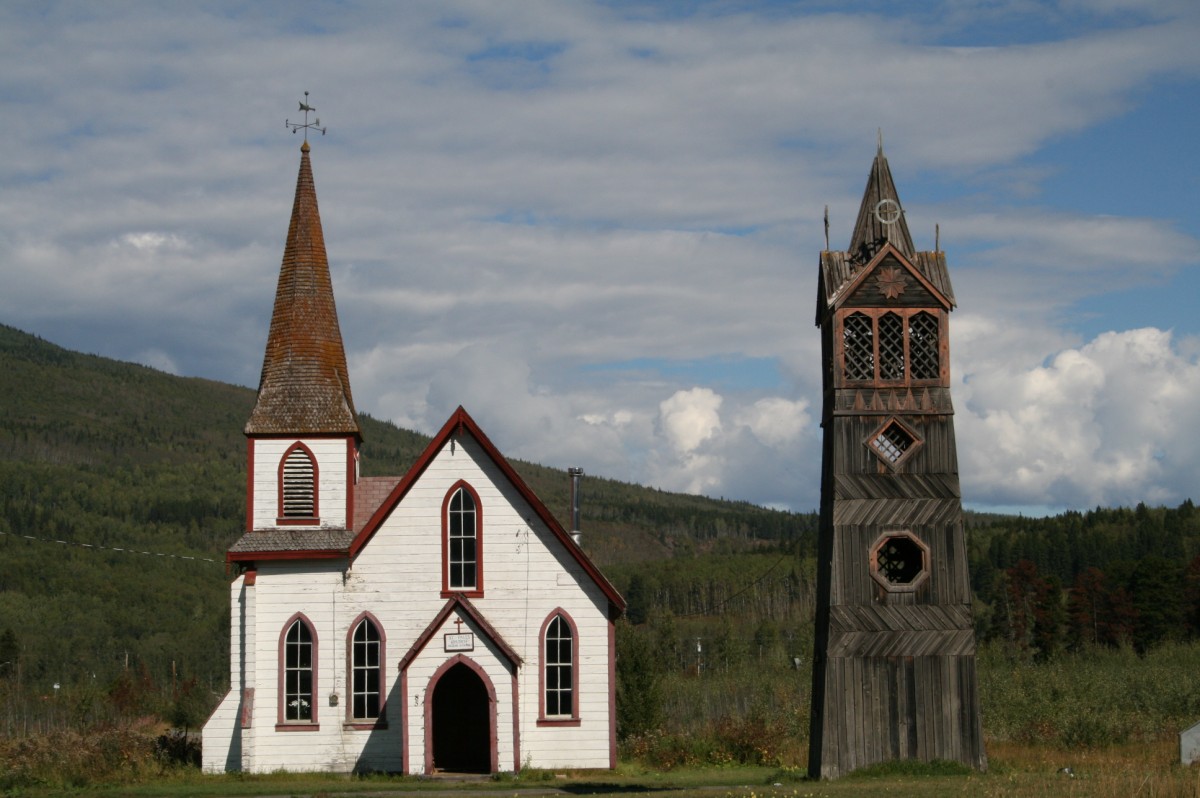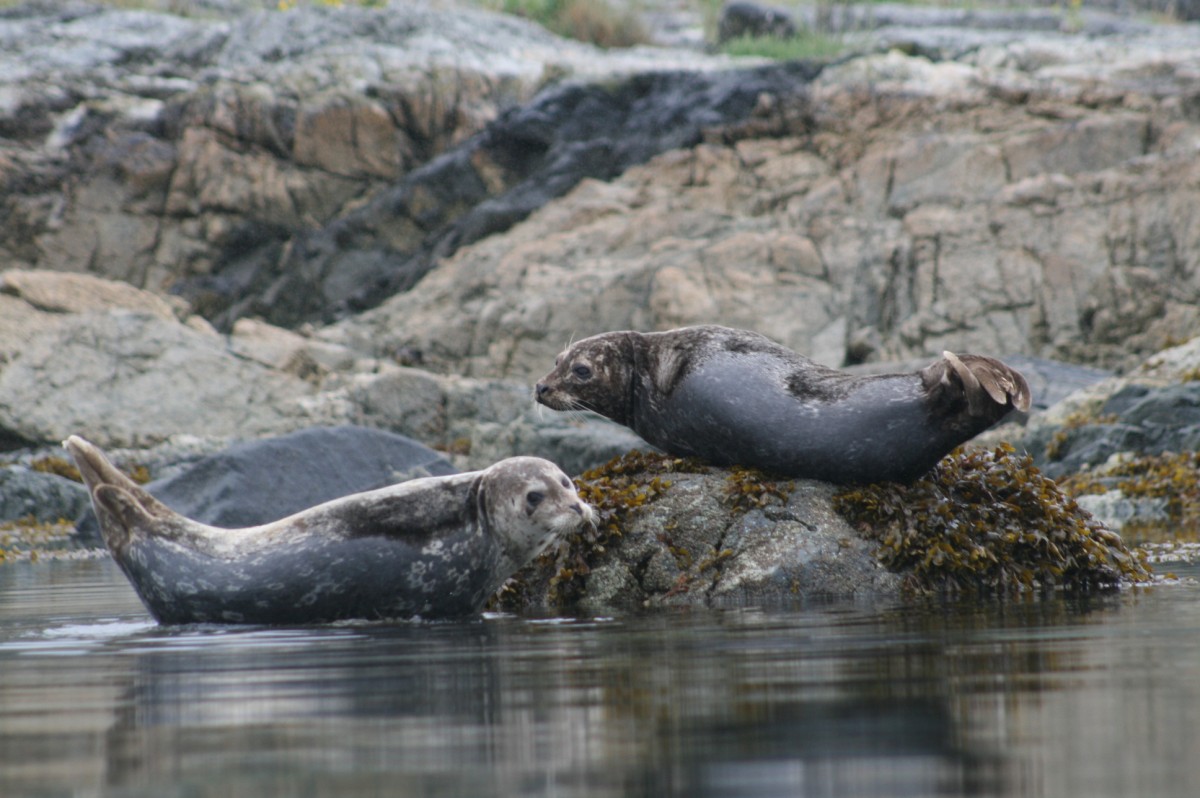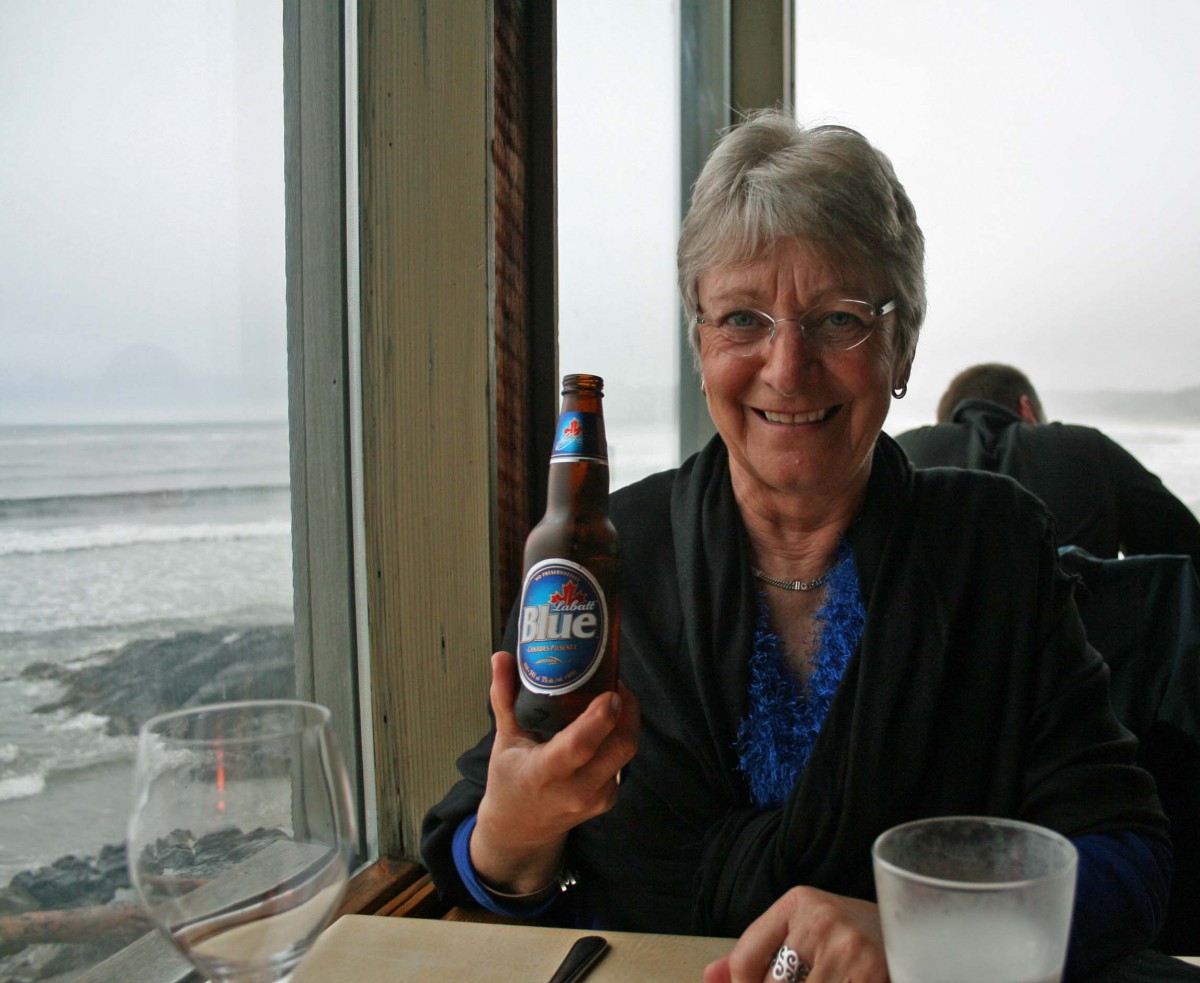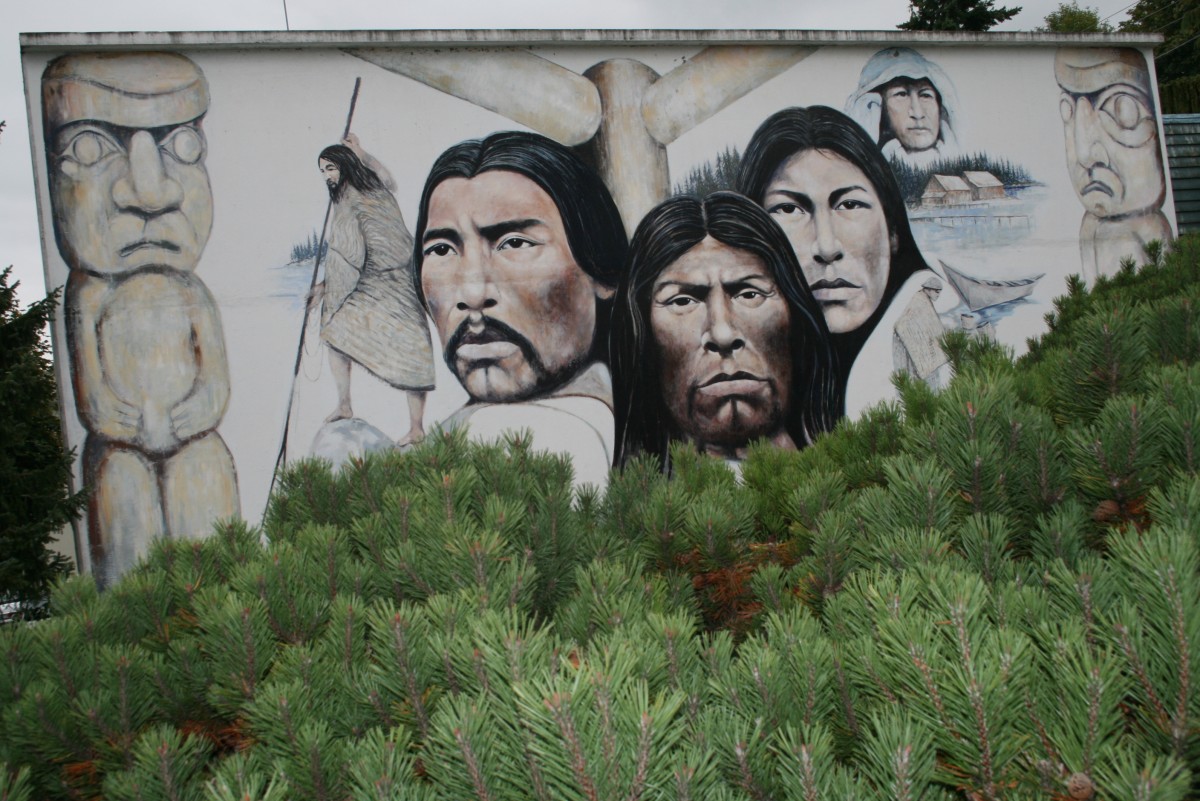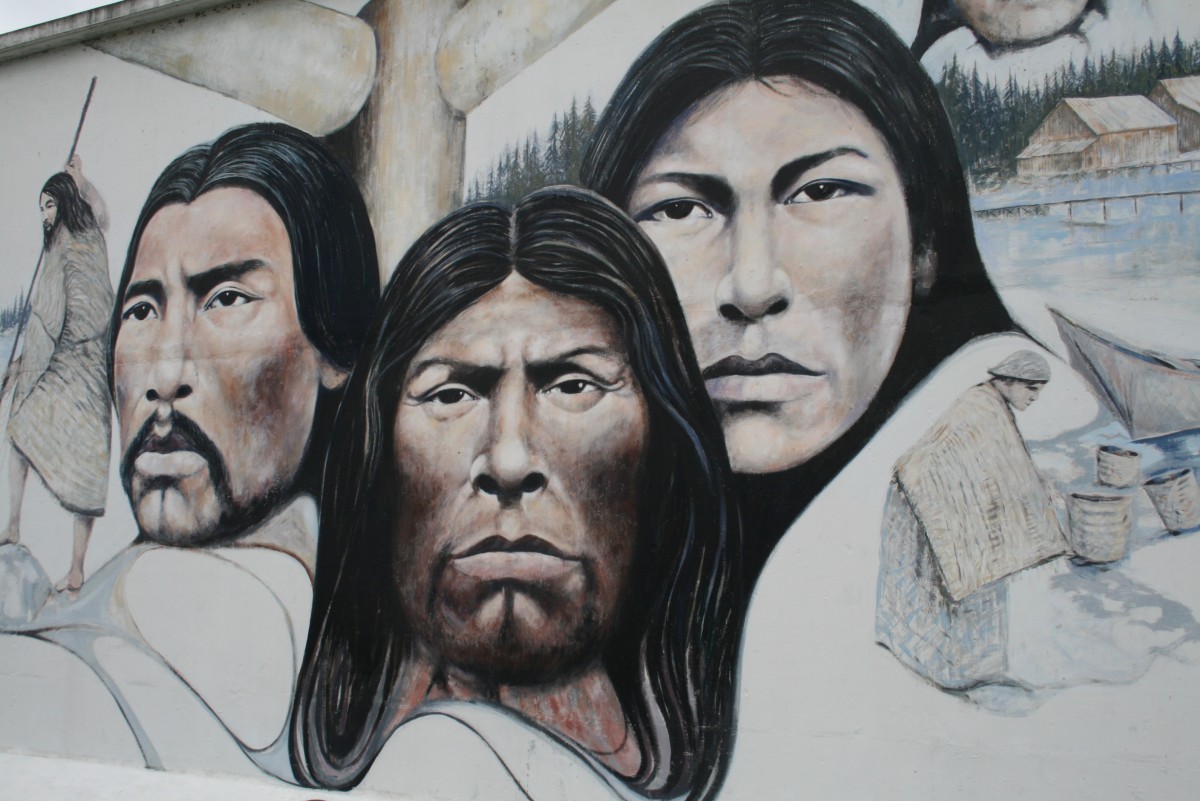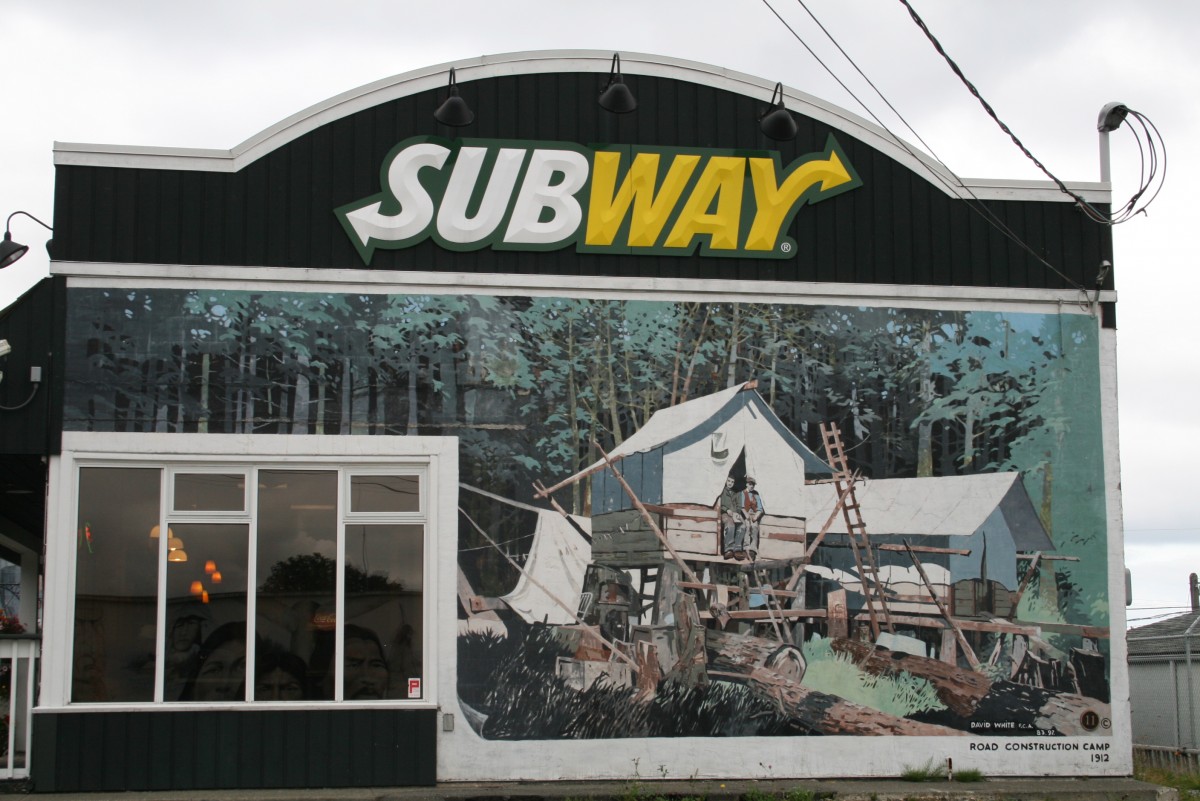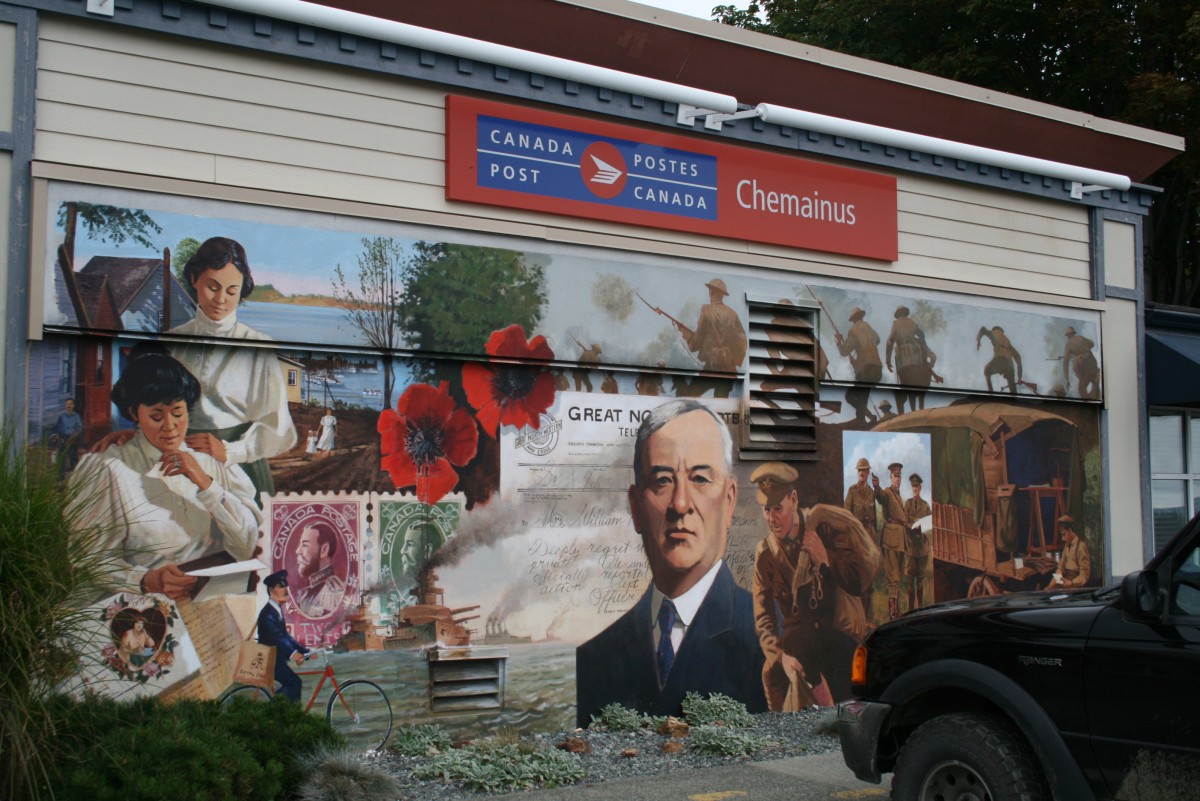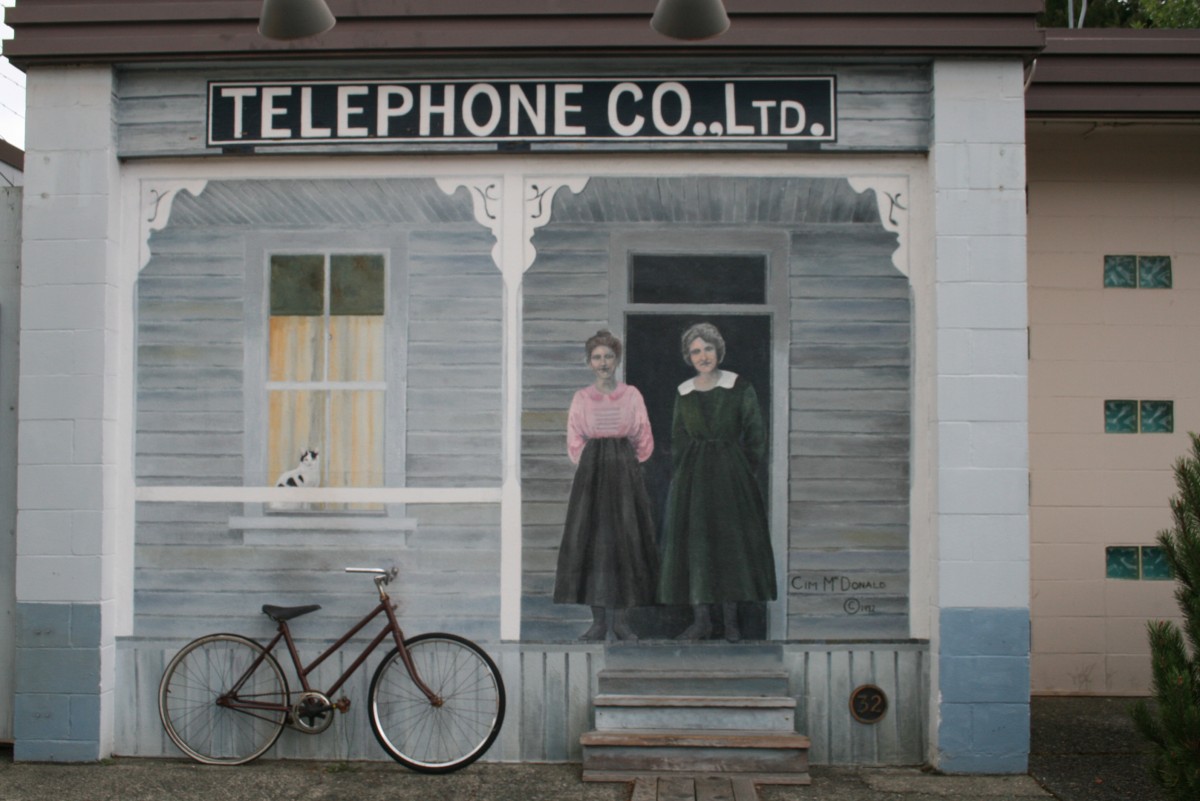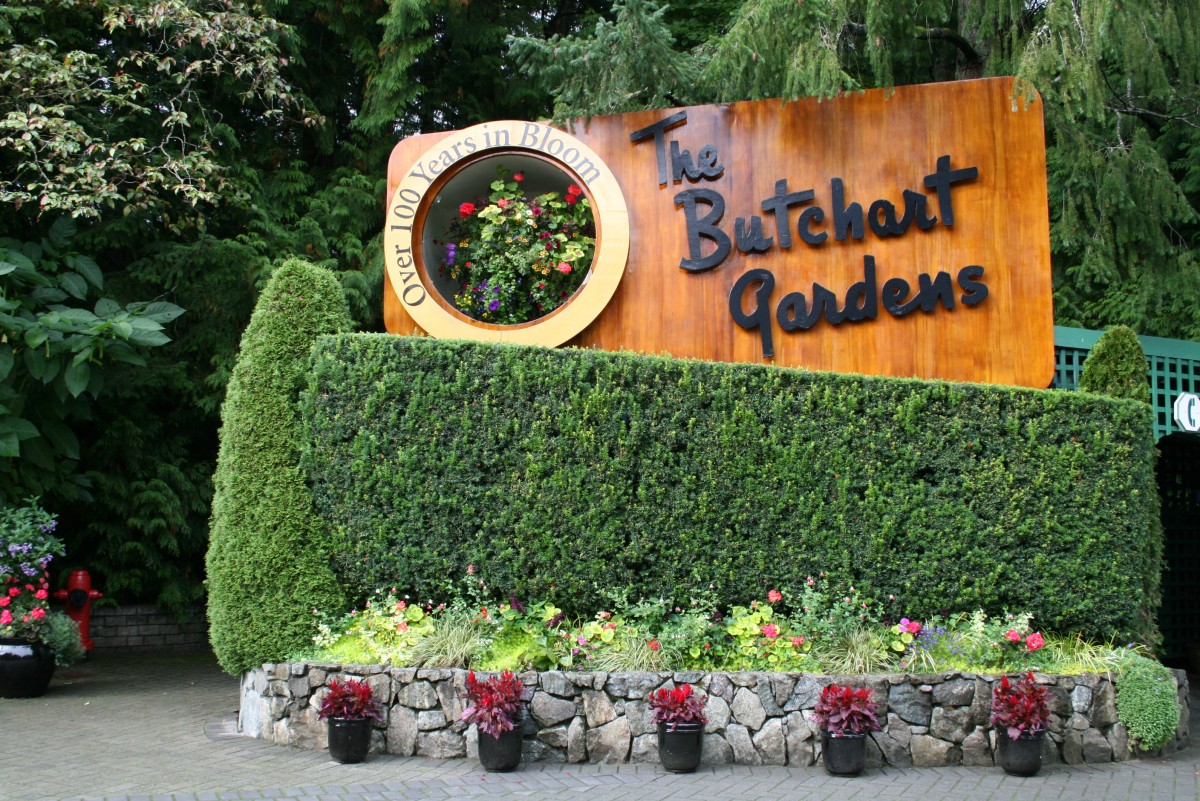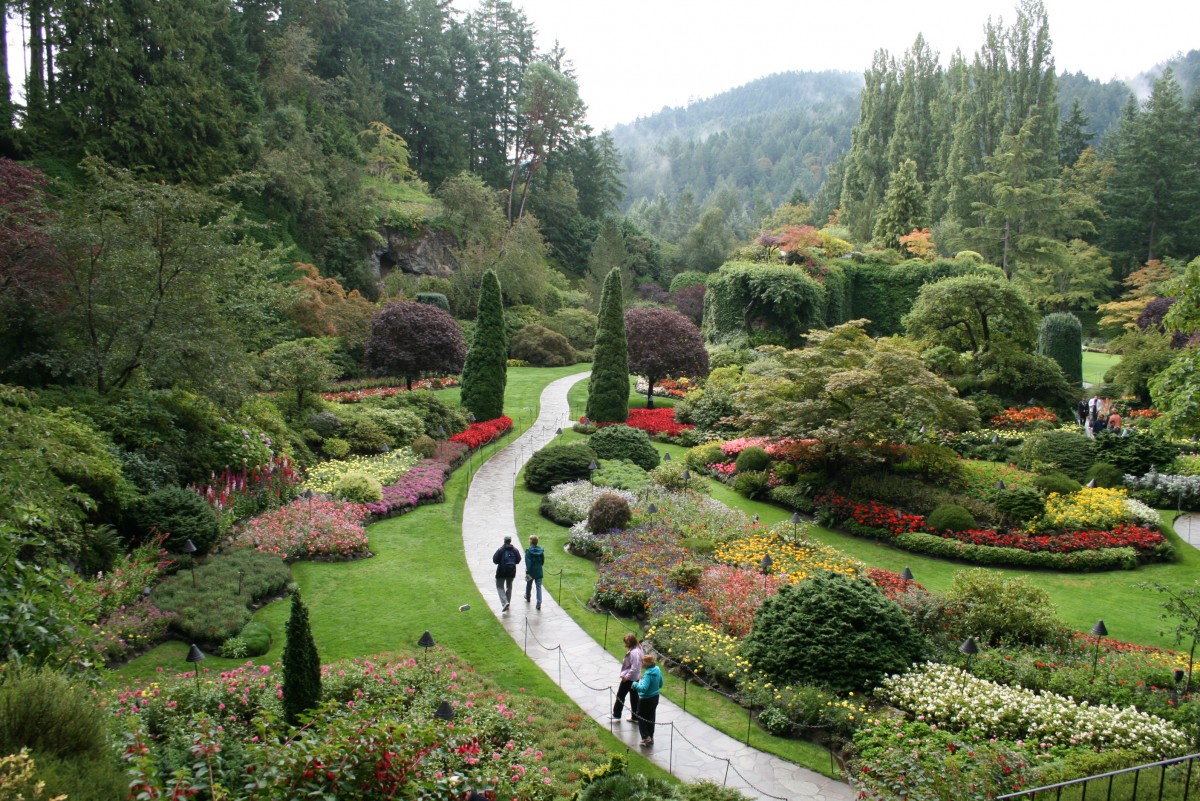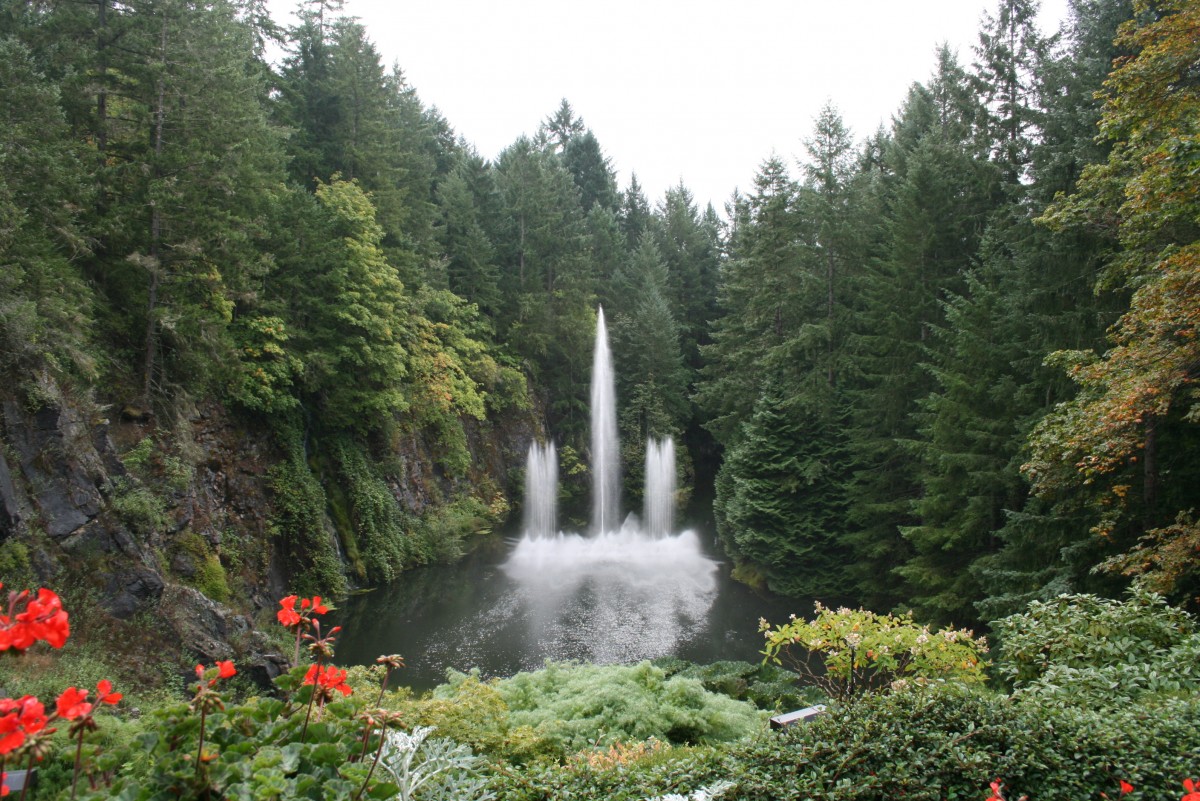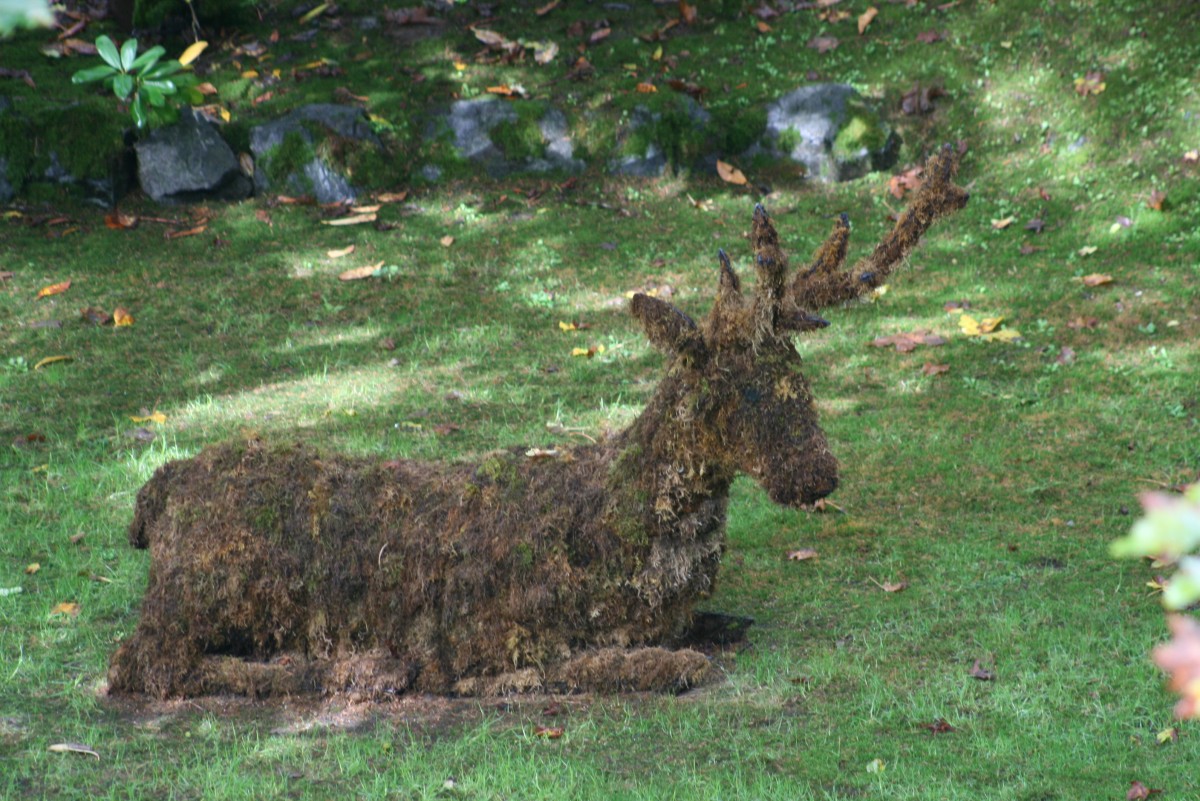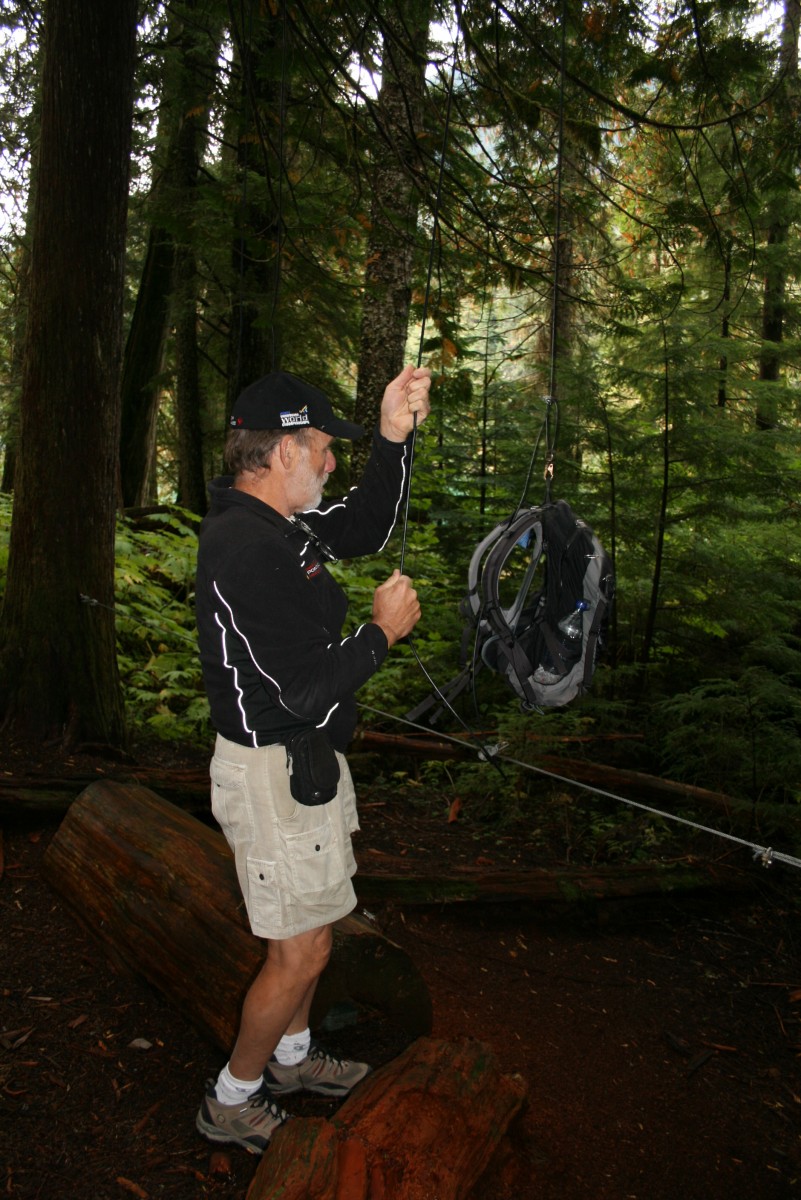Your ads will be inserted here by
Easy Plugin for AdSense.
Please go to the plugin admin page to
Paste your ad code OR
Suppress this ad slot.
Beautiful British Columbia – Vancouver, Vancouver Island, Banff & Inside Passage.
We made the most of the Air New Zealand direct flight from Auckland to Vancouver. It was a really good flight – just 12 hours and we arrived in Canada 6 hours before we left new Zealand! On the plane Marcia gave me a fright with a fainting episode, which I thought was a heart attack. I had been feeling a little off myself and Marcia changed seats with me, but then she suddenly went pale and fainted herself!
Sue and Dennis, our friends of over 40+ years met us at the airport. We were not feeling jet lagged so all went for a walk on the beach that had hundreds of logs that get washed down from the mountains or from loaded barges. Slept from 21:30 to 09:30 after a lovely evening meal.
Friday 27th August
Dennis went out early to the fish markets and bought 5 sockeye salmon for $100 CAN and said the fishermen were telling him it was the biggest salmon run in 100 years. Every year in the fall, salmon return to the rivers in British Columbia (BC) from the Pacific, swimming for 17 straight days and nights up the mighty Fraser River, heading for their spawning grounds.

Marcia and I headed off to spend several hours in the Museum of Anthropology with displays of art and culture from works by First Nations peoples of the Pacific Northwest Coast First Nations. The museum is in the grounds of the campus of the University of British Columbia. It is a teaching and research museum as well as a wonderful place for tourists to learn about making totem poles and other artifacts. There was every type of totem pole you can imagine – very exciting to look at and we all managed to see the smallest totem pole in the world!
One of the most exciting things is the iconic “The Raven and the First Men” sculpture in the Bill Reid Rotunda, Bill Reid and several other First nation sculptors worked on the piece and the story goes “The Raven and the First Men sculpture was commissioned by Walter and Marianne Koerner for the University of British Columbia’s Museum of Anthropology, in Vancouver, British Columbia, where the sculpture is currently on display. It was carved from a giant block of laminated yellow cedar. The carving took two years to complete and was dedicated on April 1, 1980. Bill Reid (1920-1998), acclaimed Haida master goldsmith, carver, sculptor, writer and spokesman, was one of Canada’s greatest artists. Bill Reid was born to a Haida mother and a European father. Reid both celebrated and defended the Haida, using his fame to champion their land claims. When he died in 1998, the Haida took him home, bringing his remains back to his mother’s ancestral village, Tanu, aboard “Lootaas.”. Reid created over 1500 works over his long career, from the ‘monumentally small’ to the ‘exquisitely huge’. In addition, and perhaps of greater impact were his parallel careers as broadcaster, writer, poet, storyteller and communicator. Bill Reid was the pivotal force in introducing to the world the great art traditions of the indigenous people of the Northwest Coast.
The story of the carving from Bill Reid website: “In Haida culture, the Raven is the most powerful of mythical creatures. His appetites include lust, curiosity, and an irrepressible desire to interfere and change things, and to play tricks on the world and its creatures. The sculpture of The Raven and the First Men depicts the story of human creation. According to Haida legend, the Raven found himself alone one day on Rose Spit beach in Haida Gwaii (also known as the Queen Charlotte Islands). He saw an extraordinary clamshell and protruding from it were a number of small human beings. The Raven coaxed them to leave the shell to join him in his wonderful world. Some of the humans were hesitant at first, but they were overcome by curiosity and eventually emerged from the partly open giant clamshell to become the first Haida”. The sculpture was carved from a giant block of laminated yellow cedar. The carving took two years to complete and was dedicated on April 1, 1980.
After leaving the museum, Sue and Dennis took us to Granville Island which boasts many floating homes on pontoons, a huge public markets where you can buy anything from local beer to fresh fish and the home of Vancouver performing arts. What used to be called the ‘industrial island’ is now a humming tourist spot and a local mecca for food, shopping and drinks! Of course where there is water there are marinas, which are home to thousands of boats of all descriptions some over 100 years old.
Later in the afternoon we met an old friend we have not seen for over 20 years. We spend several hours with her and saw her lovely flat and then bussed it back to Dennis and Sue’s place. What an efficient bus service Vancouver has and has a great PA system telling you where you are. There is also ample room for disabled people and parents with strollers. The buses even ‘kneel’ for wheelchairs for easy access!
Saturday 28th August
Dennis drove us to Lynn Canyon and we walked over the suspension bridge before being dropped off at a ferry terminal to catch a ferry across the harbour into the centre of town. We arranged to meet Dennis and Sue at Canada House Vancouver Trade & Convention Centre where the flame for the Winter Olympics was situated. It was a delightful setting with views over the harbour. We watched several float planes take off and land in the harbour. From here we walked to the Gasworks where we saw the gas clock, which chimed merrily for us while we were there. We then walked on to Chinatown – every city must have a Chinatown except Auckland – through the old Expo site and then home to a scrumptious dinner of freshly barbecued sockeye salmon!
Sunday 29th August
We took an early bus to Stanley Park, a truly amazing iconic park right in the center of Vancouver. It has 1000 acres of land and is mostly surrounded by water. It has some lovely beaches, miles of well-maintained paved and dirt trails, gardens, totem poles, animals, Canada’s largest aquarium and First Nation artworks and sculptures. We spend hours walking right around it stopping along the way to admire views and flora & fauna. Home to another BBQ, this time for friends from 30 years ago in Sydney – salmon and steaks and cheese from Granville Island yesterday.
Monday 30th August
Tomorrow we set off for our car trip around British Columbia so today we needed to shop and pack and plan even though we had done a lot of planning prior to the trip. Caught up with another old friend who picked us up and took us to ‘Provence’ in Yaletown, East Vancouver for a superb lunch. She also took us to a steam train parked in central square that her children and mine played on about 30 years ago! Then onto the bus to take us home to finish packing. Dennis was to rise early in the morning to take us to pick up our rental.
Tuesday 31st August Vancouver to Sicamous: 492kms
We arrived at the rental place at 07:30 and we were upgraded to a Toyota Matrix and off we headed for Sicamous. The weather was a bit dreary as we left Vancouver but improved the further away we got. We were only using Sicamous as a convenient stop off but it was very pretty and has two significant boasts! It is the gateway to Apple Country and is also the houseboat Capital of Canada because of its vast shorelines. We had driven 492kms from Vancouver to Sicamous and when we got to our booked B&B there was nobody home!!
We rang the lady and she was not expecting us as we were not in her books even though we had booked 6 months ago. She arrived two hours after us and was extremely apologetic and also delightful. We had a lovely comfortable bed and a fabulous deck with superb views over Lake Shuswap. Victoria was the lady’s name and has run Artists workshops for 10 years from her home as well as running the B&B.
Wednesday 1st September Sicamous to Field 274kms
Victoria produced a fantastic breakfast of pancake with fruit out on the deck overlooking the lake. There were several dragon boats out on the water and they waved up to Victoria as apparently she often rows with them.
After breakfast we drove first to Malakwa Bridge at Victoria’s suggestion, to watch the salmon run. There were huge numbers fighting to get past rocks and through the fast flowing Eagle river to reach their place to spawn.
Roger’s Pass, a high mountain pass through the Selkirk Mountains was our first entry into national Parks so we stopped and bought a two-year pass for all National Parks. As we planned to visit several, this worked out to be the cheapest way and we could leave them with Sue & Dennis in Vancouver for the next lot of visitors. Cost $7:80CAN daily, $39.20CAN yearly, or early bird yearly for $29:40CAN.

We arrived in Field (a town of little activity and huge trains) at 1600hrs, booked into our flat and drove out to the Emerald Lake and walked around it in 11/2 hours. We were suddenly halted in our tracks by a strange noise coming from the bush – and there we saw a mother and baby moose. What a thrill to stand and watch them (and of course photograph them) for a while. On the way back to Field we visited the Natural Bridge, an impressive natural rock formation that spans the flow of the Kicking Horse River west of Field. The rocks are sculptured by the pounding of the roaring waters that tear through them and this flow is even heavier as the snow and ice melt.
We stood on the natural bridge and heard the thunder of the water against the rock – it serves to remind us of the immense force of water that cannot be controlled by mankind. On our way back into Field we were held up by a massively long train – it must have been about 2 kms long. Our hosts had warned us that when these trains are in town nobody goes in or out!! You just wait for 1/2 hour until they leave. It was rather fun seeing it happen to us but I would not want it each day and especially in the morning when we need to get away early.
Thursday 2nd September
Up early to head off to Lake Louise. An alpine lake, with beautiful turquoise blue waters, is situated at the base of impressive glacier-clad peaks in the picturesque area of Banff National Park. Right beside the lake is the iconic Fairmont Château Lake Louise hotel which is a UNESCO World Heritage Site. It was originally built as a base for outdoor enthusiasts and alpinists over 100 years ago and is now a year-round luxury mountain resort. The Lake is as beautiful as it pictures, with the snow-capped peaks mirrored in the glassy blue lake. We walked to the famous Lake Agnes Tea Rooms uphill all the way, this trail is said to be one of the most travelled trails in Canada! It really is a ‘tea house’ with over 50 varieties of tea to refuel you before you head back down or continue on further.. Supping tea and looking out over the hills and lakes is a ‘truly’ memorable moment. While we sat there sipping tea we were visited by a chipmunk, which entertained us for quite some time! Getting there early was a good move as we passed hoards of people coming up as we went down.
Next stop was Lake Moraine – valley of the ten peaks, this lake would challenge Lake Louise for the most beautiful spot. One of the peaks called Mount Temple is the third highest mountain in the Canadian Rockies. After we took in the beautiful glacier fed lake I clambered to the top of the Rockpile interpretive trail, which was really worth the effort giving spectacular views of the lake and mountains. Then we walked around part of the lake and spotted some more cheeky chipmunks along the path. We were a little late getting here after Lake Louise so we had some difficulty finding a car park but it was well worth the wait.
On our way back to Field we stopped to admire the Takakkaw Falls, in Yoho National Park. They were beautiful and both agreed they were really worth the little detour.
The famous Spiral Tunnels in Yoho NP was our next and last stop of the day. The name explains it all: the two tunnels form a gigantic loop inside the mountain. If you are lucky enough to time your visit when a train approaches, as we did, you can watch the train wind its way through the two tunnels. The spiral tunnels were necessary to decrease the slope of the track, as it made its way up to Kicking Horse Pass. We watched the train, which was about 1km long wind its way through the tunnels slowly.
Back home where we had leftovers for dinner and packed for an early start – unless ‘trained in’ as the locals say when you car is blocked by a train for a half an hour!
Friday 3rd September
We had to be on our way very early to catch a shuttle bus to take us into Lake O’Hara, so we left Field at 07:50. We had to book our place on the bus months before as only a certain number of visitors (225 per day) are allowed in each day based on a quota system, some people camp overnight, some tramp with clubs and some stay in the Lake O’Hara Lodge and others like us come for the day. Lake O’Hara is not only beautiful, but fragile and sensitive to the presence of strangers and we are given a ‘what not to do’ talk on the bus on the way there asking us to please protect this special place.
We parked the car and hopped on the bus and wondered what the excitement was about – a big grizzly and its cub had just gone up the road ahead of the bus – we just saw it’s rear end disappear into the bushes.
The lake was breathtaking with its wooded hillsides, alpine meadows, snow-covered mountain peaks and glaciers. All positioned around this beautiful lake that has hanging valleys, pristine turquoise alpine lakes and some fabulous hiking. It is the crown jewel of the Canadian Rockies. We chose to walk the Alpine Circuit (12km) which we were assured had a little bit of everything and indeed it had, it was quite spectacular. We passed Lake Oesa, walked the Yukness ledge. We ate lunch by the lake and caught the afternoon bus back to our car. What a truly memorable day!
Banff here we come! We arrived there about 4pm and sat in the sun while we waited for Tree Tops B&B to open. It was a lovely spot and Rosemary & Peter (a Danish pianist) came to greet us and offered us NZ Sauvignon Blanc on the balcony. They were wonderful ‘hands on’ hosts. Strangely enough the other couple staying there were also from NZ and so Peter played ‘Pokareare Ana,’ a New Zealand iconic Maori song.
Sitting on the balcony sipping NZ sauvignon balance was a lovely way to while away the hours until our friends who live close to Banff came to meet us in their Camper van. We arranged with our friends to meet at ‘Saltlik’ for dinner, Saltlik is a salt given to cattle to ensure correct diet. We had a good dinner and then home to very comfortable B&B
Saturday 4th September
We decided to have a quiet day wandering around the town of Banff following a feast for breakfast serenaded by Peter on his piano! While eating breakfast we heard about the earthquake in Christchurch which was distressing as we have friends there. Once we communicated that all was well we headed out into the town. Banff was mush les crowded than we expected and we enjoyed just wandering around. The Banff Philharmonic orchestra was playing music in the town square so we stopped and listened to them for some time enjoying the music. The violinists were playing with great energy when a huge gust of wind blew the women’s skirts up around their heads but they still continued to play on…. after all …the show must go on!
We went to the Tunnel Mountain RV Park to meet our friends for a BBQ at their site. There were many palatial RVs with all mod cons and a few slide-out rooms. Our friends had even seen a piano in one and some had motors of 5,000cc + so must eat up fuel.
Sunday 5th September
Our friends invited us to have brunch at the very posh Fairmont Banff Hot Springs a huge castle like building just outside the town. Called Canada’s “Castle in the Rockies”, it has been a hotel for more than 125 years.
“William Cornelius Van Horne, appointed general manager of Canadian Pacific Railway (CPR) has been credited with recognizing the tourism potential of the Canadian west. Van Horne hired Bruce Price of New York, one of the leading architects of the time. His work was so influential that the château style was the only acceptable architectural method for government structures at the time. With Price heading the project, construction of the Banff Springs Hotel began in the spring of 1887 and the hotel publicly opened on June 1, 1888.”
The lunch spread was superb, it was a memorable occasion and one we would probably not have had but for our friends taking us there.
Out next stop in Alberta is Jasper taking the Icefields Parkway. Condé Nast Traveller rates this drive one of the top drives in the world and it certainly lives up to that. It crosses two National Parks, Jasper & Banff and runs along Highway 93 North, past un-spoilt mountain lakes, glaciers the Columbia Icefields and beautiful picturesque sweeping valleys. Stretching 232km (144mi.) through the heart of the Canadian Rocky Mountain Parks World Heritage Site, this road trip is too wonderful to drive straight through, there are lots of worthwhile stops along the way. We stopped at the Athabasca Glacier which is one of the six principal ‘toes’ of the Columbia Icefields. One can take a trip onto the glacier by taking a tour on a massive vehicle specially designed for glacial travel, we did not have time to take the tour but just to be able to see it was surreal. It is situated across from the Icefield Centre, which is also worth a visit. The ice on the glacier is in continuous motion, creeping forward at the rate of several centimeters per day and flows down the valley like a frozen, slow-moving river, however, it has been retreating slowly but steadily over the last 125 years.
We then stopped at Peyto Lake which is a glacier fed lake called after Bill Peyto, an old trail guide and trapper who worked in the area for years. It was a steepish climb up to the lake and we were loving the view when we heard a large bus engine come to a halt behind some trees and out popped 30 Japanese tourists…… we felt cheated as we had walked all the way up! The view was spectacular and as we took photos it started to snow lightly which coloured the already beautiful autumnal colours. On to Jasper for the night in pleasant B&B accommodation and out to dinner in a local North American chain called Earls.
Monday 6th September
Our first stop today was at Medicine Lake in the Maligne Valley about 20kms from Jasper in the Jasper NP and is formed by the Maligne River.
All these lakes are a little different and are all beautiful in different ways. After a short stop here we headed off towards Maligne Lake via Maligne Canyon, a most spectacular natural phenomenon where millions of tons of water pour through the rocks and wear them down over the years. Some points of the canyon are only two meters across but go down to a depth of more than 50 meters. Maligne Canyon is carved into the ‘Palliser Formation’ (a geographical formation). Some geologists speculate that parts of the canyon were originally deep caves that have since been uncovered by glacial scraping and water erosion. It was really spectacular to watch and listen to the thunderous roar of the water falling down 50 meters!
A very exciting thing happened to us driving from Maligne Canyon to Maligne Lake….we accomplished one of my ‘must see’ goals. We saw a big brown bear, she was casually eating large berries from the bushes on the side of the road and she had an adolescence cub with her. I got out of the car with my camera, as did about ten other tourists who had pulled up in their cars to have a look. (If you are travelling around Canada and you see cars parked on the side of the road where there is NO tourist attraction – stop, as you can be sure there is some wildlife around!)
I got some good photographs and was following her as she wandered from bush to bush. Suddenly she changed direction and decided she would like to cross the road to some berry bushes on the other-side and came towards me, I was then directly in her path and knew I could not get to my car which was parked further down the road. I ran to the closest parked cars and luckily the door was unlocked and some people were inside the car, so I hopped in. “Really sorry to intrude” I said, ‘but I cannot get to my car”. They looked at me and nodded and we all laughed together in relief to be safe inside the car, as they too had just raced back to the car. We watched the bear and her cub stroll across the road and ensured she was safely engaged in flower and berry-eating on the other side before I then ran back to my car to meet Marcia who had been a little worried about the whole situation! It was wonderful to see the bears in the wild but a little scary as well.
Everything else for the rest of the day was a little bit of an anti climax. Lake Maligne, in Jasper National Park, is famous for the colour of its water and the surrounding mountain peaks. You can see three glaciers from the lake and also Spirit Island. We drove back to Jasper and then drove out to the Patricia & Pyramid Lakes. The lakes are quick and easy to get to and are about 8 km from the Jasper towns (along Pyramid Lake Road) and well worth the visit. Early to bed and early to rise tomorrow for a long days drive.
Tuesday 7th September Jasper to Smithers 780kms
We were all ready for off at 0700 for our long 780kms drive to Smithers. It took us 9 hours with some rest stops and despite people assuring us we would definitely see elk and caribou we saw nothing! We were very disappointed as we passed many signs warning us to be careful……alas nothing! Our accommodation in Smithers was at Storknest Inn and was delightful, comfortable, and clean and the owners were very friendly. We bought a takeaway pizza from next door and enjoyed it in our room.
Wednesday 8th September Smithers to Prince Rupert 300kms
Went for an early morning stroll around Smithers, which was a rather nice little rural town. It is big enough for me to get a little lost but managed to retrace my steps to our B&B in time for breakfast after which we set off to drive 300kms to Prince Rupert. 16kms west of Smithers we stopped for a stroll at twin falls where two waterfalls side by side cascading over rock bluffs and crashing to the rocks below. It was a very pleasant short 5 min walk to the viewing platform.
Our next and longer stop was in Moricetown, about 30kms west of Smithers, which is a native Indian village or a Wet’suwet’en village on the west side of the Bulkley River on Coryatsaqua (Moricetown) Indian Reserve. The current village was built during the early 1900s. According to locals their ancestors lived here over 4,000 years ago. It is home to “approximately 693 on-reserve members, 1228 off-reserve members with a total population of 1921 people”.
We parked close to the bridge across the river Bulkley and watched the salmon (Koho Salmon) jump out of the water. They were faced with a huge uphill battle to get to their place of spawning as there was a massive rock to swim up which is impossible but they were helped over this rock by the local first nation people who catch the salmon in a net from this rock, tag it and then they released it into the Bulkley river in a pool above the rock. The First Nation people work very hard from this rock to catch the salmon and relocate them back to the river above the rock so they can continue their journey. Many people come here to fish in the local river but are warned against fishing from a special rock sacred to the First Nation People – it had been nicknamed ‘idiots rock’ because it would be an idiot who fished from there as huge waves pound the rock. There are large signs warning strangers not to fish there, in fact one needs a permit to fish anywhere in this area and even with a permit you can be moved on at any time by the local First Nation people. We watched the First Nation people go through the whole process of netting, transferring, tagging and releasing the salmon.
New Hazelton was our next stop, and is named after the hazel bushes on the area’s terraces, and is home to the Gitxsan and Wet’suwet’en First Nations people, and has been for centuries. In the mid-1860s, the pioneer community of Old Hazelton (now Hazelton Village) was established along the river. We used a pamphlet we picked up from the New Hazleton Visitors centre called “The Hazeltons: A Journey Through Time” to take a self guided walk through the communities and read the “Hands of History” signposts which describes a historical person or event. We saw some amazing totem poles and went upstairs to see the “River of Mist” exhibition that was on in the centre.
We finally arrived at Prince Rupert and found our B&B for the night. The B&B house called Pillsbury Guest House, was the “the oldest house in Prince Rupert” according to our host Coleen. The historic home was built in 1908, and has a lovely view of the harbour and also offers a 3-course breakfast every morning. Coleen was indeed a character befitting the house she lived in and loved to sing ‘Edith Piaf’ songs.
Thursday 9th September
After a monstrous breakfast of fruit, tortilla, crepes, cereal and jams, and a rendition of some Edith Piaf songs and some funny jokes which the other guest at the table did not get, we headed off for a wander around Prince Rupert (PR) town. Prince Rupert is a vibrant port town on British Columbia’s wild and beautiful Northwest Coast. We wandered around town and then down to the port where a massive ship called the “Norwegian Star” docked – it was nerve-racking to watch them berth this gigantic boat beside a tiny walkway but they did it with ease! Prince Rupert is a popular stopping point for many Alaskan cruises and this boat was on it way up to Alaska with thousands on board. We had coffee and spent some dollars in the shops.

In the coffee shop we sat on stools that were shaped like cows udders – after all we were in Cow’s Bay in a cafe called Cowpuccinos Cafe and later had coffee at the Cow’s Bay cafe.
Fueled with coffee we drove to the ancient North Pacific Cannery out past Port Edward.
“Salmon canning has been an important economic force on the West Coast since the mid to late 19th century. Enterprising individuals built salmon canneries along the coast, numbering over 200 in the industry’s heyday. These canneries were built to exploit the untapped resources of the huge salmon runs on the West Coast Rivers, and were a powerful force that shaped the history of the coast. On the more isolated northern salmon rivers, canneries were built as self-sustaining entities with employee housing, and all of the supplementary activities that enabled the cannery to make a profit for its owners. Salmon canning was an important stimulus to economic development of the Coast, as it provided jobs as well as a market for goods, and the justification to build infrastructure such as roads and railways.”
“Salmon canning on the North Coast developed along different lines than those in the south. One of the most important differences was the physical isolation. On the Skeena and Nass Rivers, canneries had to be built near the fishing grounds. This was for two primary reasons. The first is that prior to the advent of refrigerated boats, the catch had to be transported and processed with the utmost speed to prevent spoilage. The second reason was to take advantage of the nearby First Nations villages and their millennia of fishing expertise.”
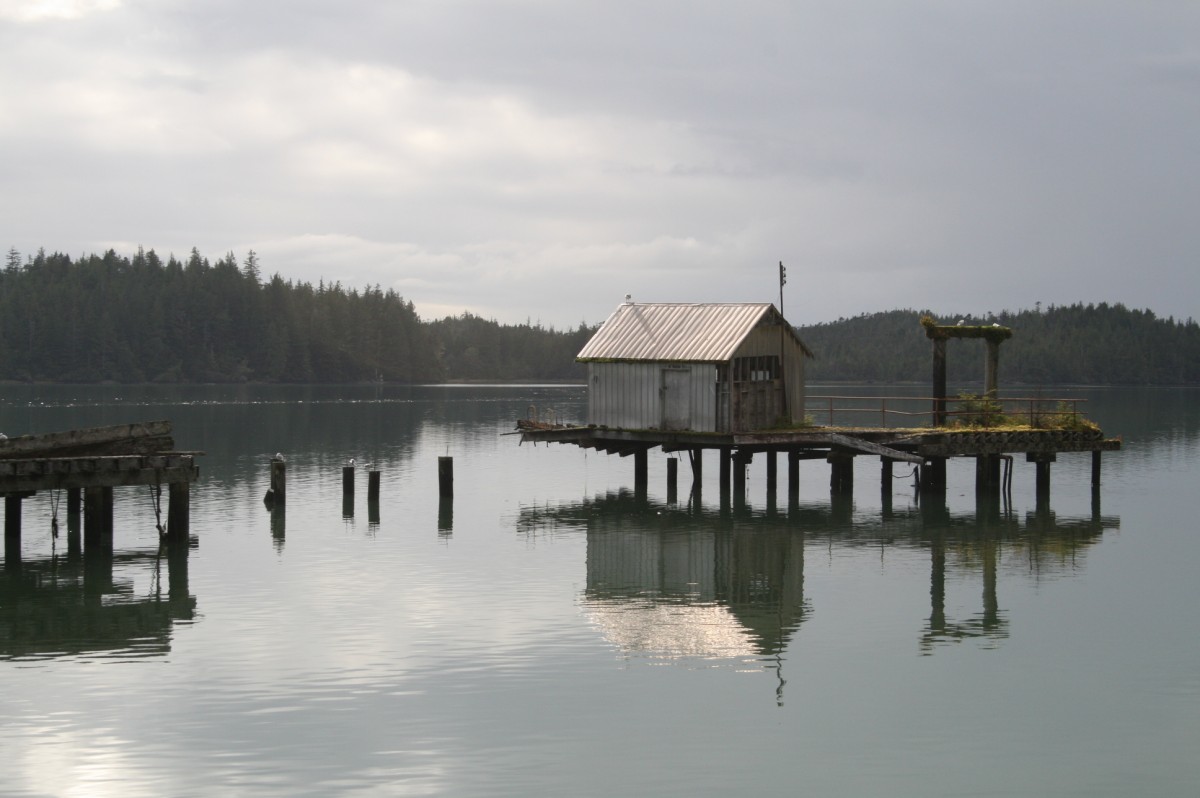
“North Pacific Cannery is THE LONGEST RUNNING Cannery in BC and has a unique history North Pacific Canning Company was formed on November 28, 1888 by Angus Rutherford Johnston, John Alexander Carthew, and Alexander Gilmore McCandless. In 1889, the trustees received a crown grant for 183 acres of land at a cost of $32 and the plant was constructed. It had almost 90 years continuous salmon production and fish processing until ending in the late 1970s.
By 1891, John Alexander Carthew sold the plant to Henry Ogle Bell-Irving and the The Anglo-British Columbia Packing Company, which was founded the previous year. Bell-Irving recognizing the advantages in of consolidation of canning operations and went to England to raise the required capital, and on December 22, 1890 formed the ABC Packing Company to acquire and operate the canneries. He began securing options on several British Columbia fish canneries in the fall of 1890, NPC being one of them. In 1891, the company accounted for more than one quarter of British Columbia’s total salmon pack, and was the foremost packer of sockeye salmon in the world.
ABC Packers owned and operated North Pacific Cannery until 1968, when the company was folded and its assets sold off. The history of NPC is also unique because of its almost continuous ownership by a single firm for over 76 years; this is remarkable in an industry marked by acquisitions, mergers, bankruptcies and restructuring. North Pacific was purchased by Canfisco of Vancouver BC in 1968.” (http://www.northpacificcannery.ca/cannery-history/daily-life-at-the-cannery/)
Your ads will be inserted here by
Easy Plugin for AdSense.
Please go to the plugin admin page to
Paste your ad code OR
Suppress this ad slot.
It really was an amazing place, steeped in years of history and a photographer’s paradise. One can take tours or self-guide, as it is very interactive with information posters everywhere.
We drove back to PR and went to “The Breakers Pub” for dinner. The views of the sea and mountains were wonderful and the meal was good value. Home to our B&B as once again we had an early morning rise to catch the ferry to take us down the Inside Passage to Vancouver Island..
Friday 10th September
Our alarms went off at 04:45 so we would be in time to load our car and ourselves on the ferry to take us from PR, along the Inside Passage to Port Hardy on Vancouver Island. We waited in a queue for half an hour and as British Columbia is “idle free” we could not have the heater on in the car so we were pretty cold! However, we passed the time watching people arrive for the ferry – the ship can take 100 cars and 600 people and one must book well ahead of time. Once on board we explored the ship and saw that it was a lovely clean & comfortable boat and pretty new as it was built in 2009. We paid an extra $30CAN for a seat in the front lounge and boy was it so worth it. It was peaceful, comfortable and had amazing views and could be only access via ‘keycard’. We had breakfast as we cruised the Inside Passage at 22knots. Unfortunately the weather was pretty terrible, the views were shrouded in mist and it rained most of the day on and off. Despite the weather we did have some views of the towns and villages we sailed past. Several humped back whales, killer whales and a pod of porpoises passed us at different stages and the captain would announce – “whales on starboard” and we would all race to that side of the boat. Because we were at the front we often just saw the tail end of them. The ship shop was well stocked and encouraged us to buy some goods for family back home. One couple we met were from the Prairies but had retired to Vancouver Island and were celebrating their 50th wedding anniversary by taking this cruise. Despite the weather we thoroughly enjoyed the day and have lots of misty photographs to show for it.
We arrived at Port Hardy at 22:30 and drove straight to the backpackers there. It was a bit of a dive and our sheets were dirty (maybe just ‘grey’ but looked like they had not been changed). We stripped them off and slept in our sleeping bag liners – always worth bringing these as they weigh nothing but can be very useful in situations like this one. The chap who ran the backpackers was just filling in between photographic trips. He showed us a book of photographs of British Columbia that he had published recently. He obviously did not know much about running a backpackers.
Saturday 11th September
We found a cafe in Port Hardy and had a cooked breakfast before setting off for Campbell River to catch a ferry to Quadra Island. We drove down an old logging road looking for bears but did not see any and then drove to a place called Telegraph Cove that we had read was worth a visit. What a quaint place this turned out to be.
Every building was on stilts as the whole cove was tidal. All original homes were maintained and each had a plaque telling its particular history. Many of the local houses were used initially as logging houses and sat on logs and were moved from site to site as the logging areas moved. It is rumoured/said that many loggers drowned as none of them could swim and when they got up in the night to ‘pee’ it was often so foggy they would loose their way and fall overboard! Telegraph Cove was once a very isolated place. One local story tells of an influenza pandemic that affected one whole family. They were so remote that they had to drive through the night to get help. Sadly, the father died on the way and the mother soon afterwards.
We stopped in Campbell River Information centre to cancel the backpackers we had booked in Ucluelet (because of our experience in Port Hardy) and book another B&B there instead. Then we went shopping for food and groceries, as we had to bring our provisions to Quadra Island where we were staying for two nights. We got lost on our way to the ferry but finally got there for the 10-minute ferry ride across to the island. The drive from the ferry to Quadra was very pleasant but along a dirt road which was very narrow. We had the pleasure of seeing some little fawns dance across the road in front of us.
We arrived at this ‘magic place’ called Discovery Islands Lodge in a rain cloud. Quadra Island is part of the Discovery Islands, a group of small islands located along the Inside Passage seaway between Vancouver Island and mainland British Columbia. Quadra is home to an eclectic mix of people from all parts of the world. The island has stunning natural beauty, beaches and wildlife. Discovery Island Lodge offers accommodation and kayak trips all around the island – day or overnight trips depending on what you want. Lannie & Ralf who own the place and live on Read Island 5 minutes away by boat welcomed us. There were a group of six people from BC and two women from Vancouver Island staying there as well as us two. One of the women was a nurse who worked with the First nation people on Vancouver Island. We had brought our own food for dinner which was very tasty and our room was comfortable and clean.
Sunday 12th September
We woke to a dull overcast day with light rain and very cold. What an amazing breakfast we had – fruit, freshly baked muffins, porridge made with Quinoa (the first time we had heard of this grain) and sunflower seeds. Ralf was our guide for our kayak trip and we and another couple from Georgia headed off from the Surge Narrows, in the mist at 10:30 in double kayaks and skirted the side of Read Island.

We paddled to Maurelle Island, which is located northeast of Quadra and stopped at Surge Narrows Provincial Park where we had lunch. We all felt a little cold and had cold wet feet but had a lovely lunch of salmon salad, homemade bread and cheese. We managed to see seals, ducks, sun stars starfish (orange) and sea star starfish (purple). The rain finally stopped on the way home but despite the rain and feeling a little cold we had a wonderful day.
Monday 13th September
Once again we had to rise early to get to Heriot Bay to catch the ferry back to the mainland. I rang an old friend, who lived in Cortes Island, which is one of the Discovery Islands, for a chat from Heriot Bay, but he was in Vancouver so I could not catch up with him. We took the next ferry back to Vancouver Island and then decided we would take the scenic route from Campbell River via Port Alberni, which is a lumber and fishing town. We stopped there and watched a display from a fire launch spraying water as it sped along the river. We did intend walking along the boardwalk but the tide was too high. It really was not a very scenic route at all but we did stop at Cathedral Cove in MacMillan Park where the trees are massive – most of them are Douglas Fir and Red Cedar. Most of the trees in the park are over 800 years old. One of the oldest Douglas fir trees in Cathedral Grove is over 9 meters in diameter!
Our final stop for the night was ‘Easy on the Edge’ B&B in Ucluelet. Our host told us that deer, bears and cougar come around the bottom of the road at night but we did not go out to check! Instead we went to dinner in the ‘Pier Pub’ – white or red wine madam? No other choices!
Tuesday 14th September
We woke up to a very thick foggy day but after a lovely breakfast we drove to where the track started for ‘Wild Pacific Trail’, which skirts the end of the Ucluelet Peninsula. The fog was so thick that when we walked towards the lighthouse the foghorn blasted out every few minutes.
We walked down to the pier to find the group we had booked the ‘Whale & Bear’ tour with, for a treat for Marcia’s birthday. We checked we were booked for the following day and Al the owner suggested things to do today in the area. We then went into a shop next door and he followed us in a few minutes later and suggested we consider doing the trip today, as the forecast for tomorrow was not good. So we agreed but the only problem as it had been a delayed sailing today was that he could not provide lunch so he suggested a place to go and buy lunch for ourselves.
It was a lovely trip with a very knowledgeable skipper who was happy to keep us entertained with wild life stories even though we did not see much wildlife. We saw hundreds of seals of different species and some sea lions and one whale in the distance. We did manage to find some sunshine when the fog cleared in time for our champagne lunch while anchored in a beautiful bay. After the cruise we ate at a local café and then back to our B&B.
Wednesday 15th September
It was a wet and rainy day as we waved good-bye to our B&B hosts in Ucluelet. After the boat cruise yesterday and our disappointment at not seeing bears our skipper Al and his partner Toddy told us how to find a place where we could possibly see bears so that is where we set off following breakfast. But first we went to the small aquarium on the waterfront, which turned out to be a real gem, and well worth the time taken to visit. Then off we set to hopefully see some bears!
We went to a place called Thornton Fisheries several kms outside Ucluelet and not easy place to find. But boy was it worth it and did we see some bears!! We saw several bears, several black bears came and went at different time catching their breakfast, it was amazing, and had us captivated for hours. The bears take advantage of the returning Chinook salmon that are caught in tidal pools at the mouth of the creek. Thornton creek hatchery is located in Ucluelet’s inner harbour. Watching the black bears move around they seem slow and docile but we were very careful to ensure we stayed on our side of the stream as they can move very quickly. What was amazing was the swift action once they spotted their prey as they move with speed and power to catch their next meal. We were warned not to be complacent as they are still wild animals, and though they appear peaceful when viewed from a safe distance, one needs to maintain this distance and not try for close up photographs – use a long lens instead. They can be particularly unpredictable when they have a bearcubs by their side.
Our next stop was the Wickaninnish Inn just off the Pacific Rim Highway, which is an oceanfront luxury hotel with direct access to Chesterman Beach and is 5 km from Tofino village. We had coffee and cheese in the dining area – what a beautiful spot!
We then went back to Ucluelet and got dressed in our smart gear – Marcia did not know why or where we were going as this was the last part of her birthday treat. Back we drove to the Wichaninnish Inn to The Pointe Restaurant for dinner. We had a lovely seat by the window with a 240 degrees view of the Pacific Ocean right up and down Chesterman Beach. The service and food in The Pointe Restaurant, one of Tofino’s top restaurants was fantastic and we both had Dungeness crab in its shell – yum! The Dungeness crab is a highly prized shellfish found along North America’s west coast. It was a fitting end to our ‘bear adventure’.
Thursday 16th September
Today we say goodbye to Ucluelet and head off to Victoria, the capital of Vancouver Island. We spy goats on the roof of a cafe at Coombs and see the Old Country Market with ‘goats on the roof’
It seems that “the original market was created by Kristian Graaten. Kris and his wife, Solveig, emigrated with their children to Vancouver Island from Norway in the 1950s. Kris, who grew up in the small community of Lillehammer, was inspired to include a sod roof in his design of the market. Many Norwegian homes and farm structures are built directly into the hillside with the sod roof becoming an extension of the hillside. With the help of sons, Svein and Andy, and son-in-law, Larry, Kris unwittingly began to build what would become perhaps the most famous sod-roof building in the world.”
Next “it was the weekend of the Coombs Fall Fair and the grass was getting rather long. Legend has it that, after a few glasses of wine, Larry suggested that they ‘borrow’ some goats to ‘mow’ the grass and perhaps provide some entertainment for passing cars. Needless to say, the goats became permanent tenants of the Coombs market that weekend and have been there for more than thirty years. Each spring, a trip of goats makes their home on the roof, entertaining both locals and visitors from all over the world.” (http://www.oldcountrymarket.com/history.php)
The market building was huge with amazing collections of foods , sauces, oils and spices, everything you could need from a market and the goats were very happy grazing on the roof.
Chemainus, the town of 37 murals was our next port of call, it was a quaint small town. The murals were the result of a revitalisation project that was started from a state grant because there were fears that the one employer in the town, the mill, would close and Chemainus would become a ghost town. Instead it has now become a world renowned ‘mural town’ that brings thousands of visitors a year.
We finally arrived in Victoria at 16:30 and booked into Helm Inn, which was adjacent to Beacon Hill Park at the southern edge of Downtown. We had a lovely room with a view and the Inn was very close to central Victoria. We walked to the shops and bought some dinner and ate it in our room.
Friday 17th September
I awoke early and went for a walk that took me past the British Columbia Museum, an impressive building and then past the Empress Hotel (a Fairmont hotel) built in the Chateau style with turrets as per the prescription of the Canadian Railway and sitting beautifully on Victoria’s inner harbour. I walked along the waterfront and past the British Columbia Parliament Buildings, which are home to the Legislative Assembly of British Columbia.
After breakfast we set off for the famous Butchart Gardens built in an old disused limestone cement quarry by Jennie Butchart wife of Robert who ran a successful cement business until the quarry ran out of limestone. Both keen gardeners they built up, what is today a sensational masterpiece of world-renowned gardens, between 1906 and 1929. The Butcharts began by creating a Japanese Garden on the seaside, an Italian Garden on their former tennis court and a beautiful Rose Garden. Jennie Butchart was the main driving force behind the creations of the gardens but Robert took great pride in his wife’s remarkable work. He enjoyed and collected ornamental birds from all over the world and so the bird life in the gardens began – ducks in the Star Pond, peacocks on the front lawn and many elaborate birds throughout the gardens. Fourth generation Butchart now owns and runs the garden today and each generation have added their own stamp to the gardens.
We took a lovely boat ride on the Tod Inlet (in an electric boat) from the wharf near the bottom of the garden. The staff all seem to love their work and take pride in letting you know the history of the gardens. Amazing foresight of Jennie Butchart to turn a disused cement quarry into a sunken garden by hauling loads of top soil and hand down this amazing gift to next generation. The current owner Robin-Lee Clarke is the great granddaughter of Jennie Butchart and according to staff comes to work every day at 08:30 and really looks after her staff, many who have been there for many years. Each year they employ students and at the end of their season they receive a report – if they get a good report they receive a letter from Butchart Gardens inviting them back again next year. There are 600 staff employed during the peak season and this goes down to 200 in winter. A real enjoyable several hours!
Next we headed off to find Sooke and ‘The Galloping Goose walk/cycle track’ which we had read about. It was not easy to find but eventually we found it. First we stopped at 17 Mile Pub, a lovely quaint old place where we had some tasty soup before heading down the Galloping Goose trail for about 5kms.
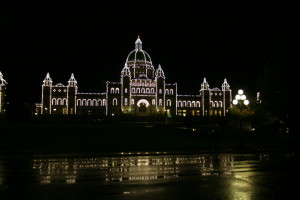
After eating leftovers for dinner that evening, we wandered out to enjoy the lights on the Legislative Assembly building which was lit up like a Christmas tree.
Saturday 18th September
We woke to sadly, our last day on Vancouver Island and drove to Sidney for a walk and breakfast before taking the ferry back to Vancouver. Had crab cakes for breakfast at the Pier cafe – tasty!
We arrive back to Sue and Dennis’s house mid afternoon, we cleared out car and took it back to the rental company where we were collected by Dennis and Sue and whisked off to there holiday home in Whistler, what a hard life! We stopped at Shannon Falls with its beautiful views then on to their beautiful log cabin under the Black Tusk mountain peak in Black Tusk village. Dennis did his usual wonderful BBQ cooking – steaks this time.
Sunday 19th September
Spent the day in Whistler about 20 kms away following a scrumptious breakfast cooked again by Dennis. Whistler was a typical alpine town where tourists are well catered for – summer and winter. We spent several hours wandering around the village having coffee and lunch and did some shopping. We visited the Squamish Lil’Wat Cultural Centre in Whistler, entrance was $18CAN and well worth it. It is the first ever centre dedicated to the history and culture of local First Nations, and its position in Whistler “is where mountains, rivers and people meet. Built to preserve their culture and share it with others, the building is designed to evoke the longhouses of the Squamish people and the Istken (traditional earthen pit house) of the Lil’wat people with a modern architectural interpretation”. (http://www.whistler.com/arts/squamish-lilwat-cultural-centre).
It is an interpretative centre with local tribes singing and playing drums and one could spend some time in their workshop watching them make woven bracelets from wet strains of cedar wood bark. We also watched a film about the First Nation People and their history in the area.
Monday 20th September
Today we walked to and around Lucille Lake just of Highway 99 – Sea to Sky Highway from Vancouver to Whistler. On the way we passed the area where the old village of Pinecrest was destroyed and all village people were moved to the village of Black Tusk, see below from the website:- www.blacktusk.org “In the years 1980-81, the town of Garibaldi, located 3 kms south of the Daisy Lake dam consisted of 2 lodges (Alpine Lodge owned by Doug and Diane McDonald and Garibaldi Lodge owned by Ian Barnett of Pinecrest), 80 lot owners, a school building, General store and fire hall. During those two years two events occurred which would figuratively and physically destroy the little village.
The first was a geological report on the stability of the rock barrier holding back Greater and Lesser Garibaldi Lakes. This report for the Government of the day impacted negatively on the town and created a liability for the government. Accordingly, an Order in Council was passed expropriating the owners’ rights and property.
The second was the Dec 26th 1980 flooding of the Cheakamus river canyon, which physically destroyed about half the properties along its banks.
The result of long and intense negotiations with the Government, led by Nelson Bastien and 10 seriously committed supporters, was the establishment of a new site, five kms north, that would become Black Tusk Village as we know it today.
We walked around Pinecrest lake and back through the forest to Lucille Lake.
Tuesday 21st September

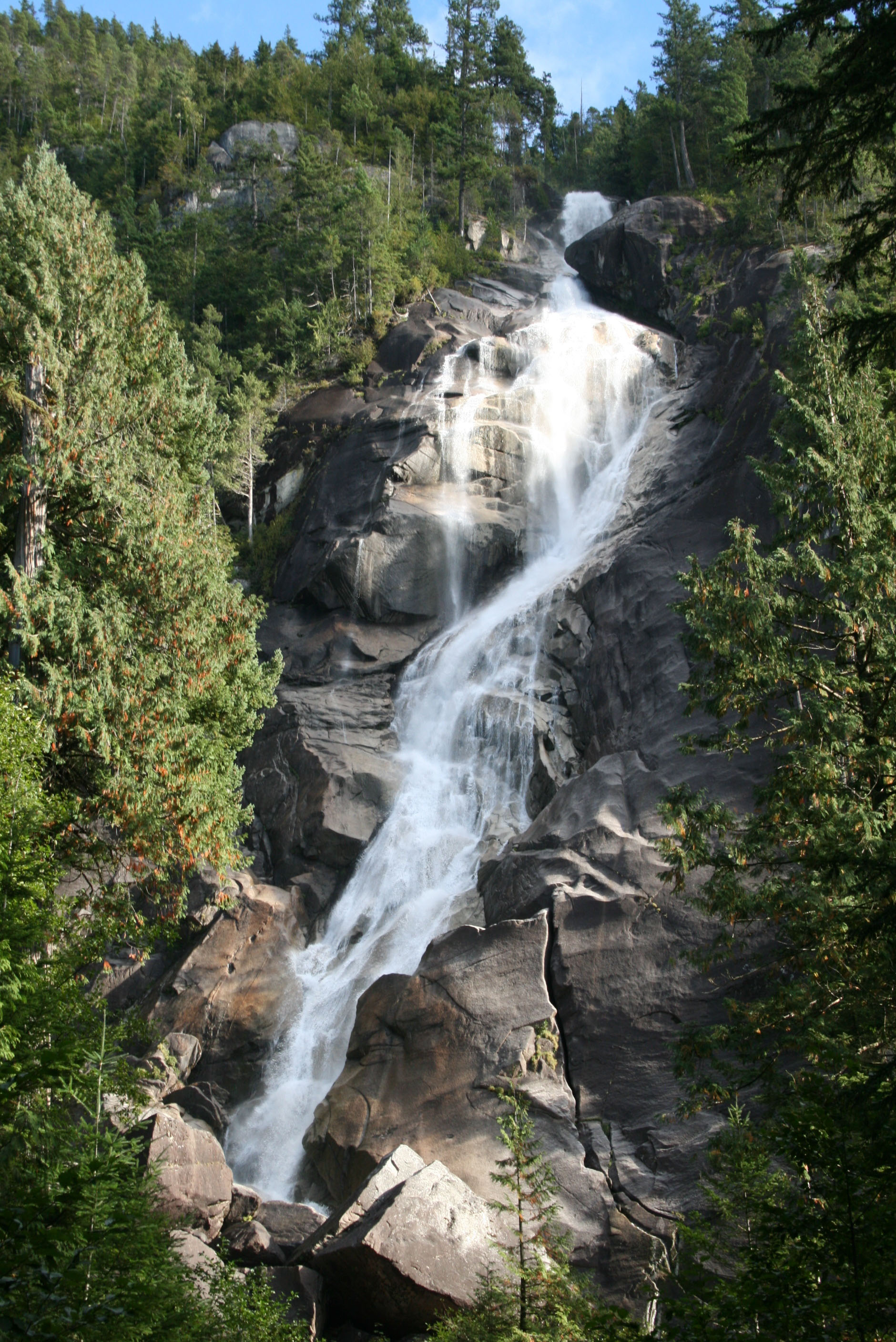
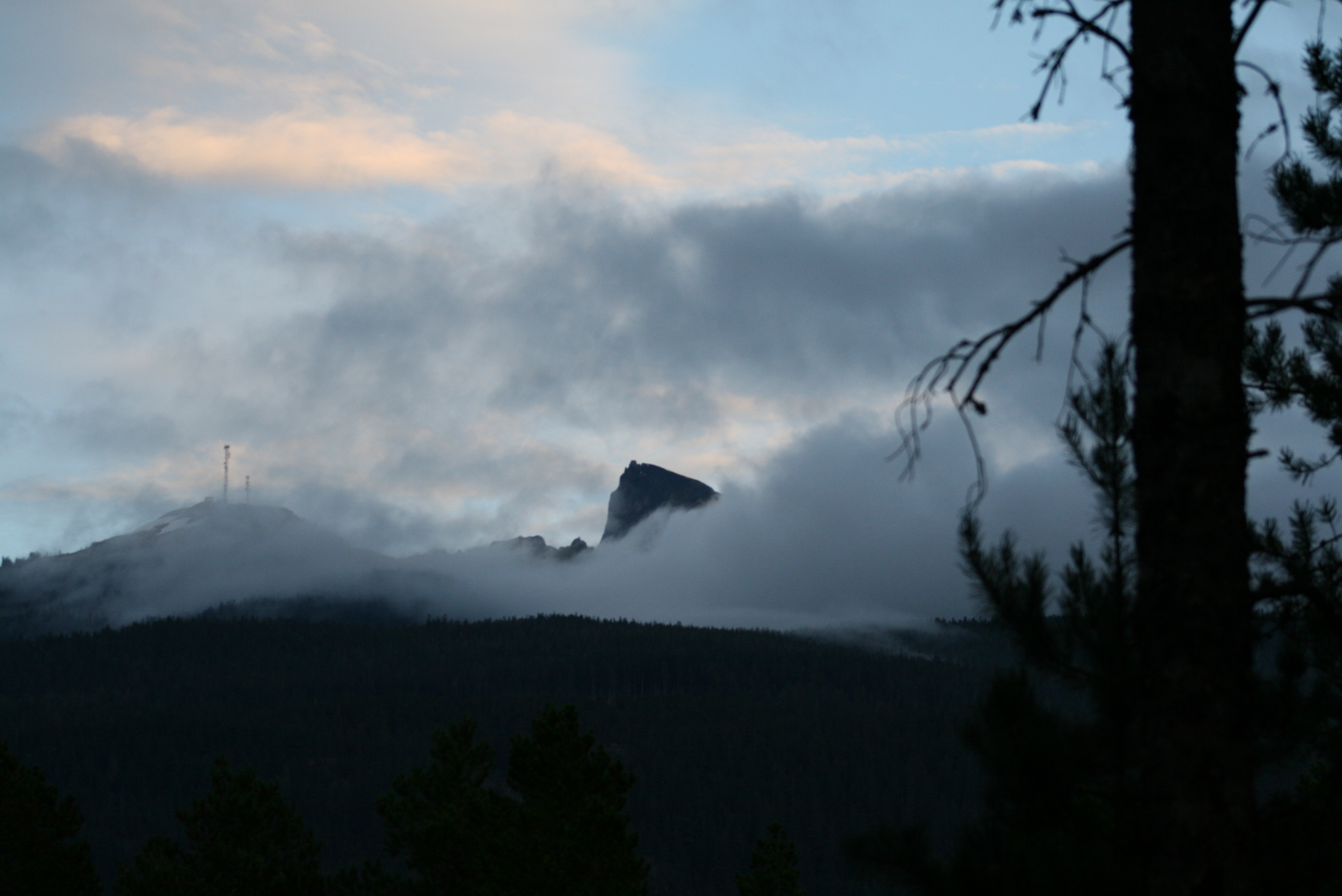
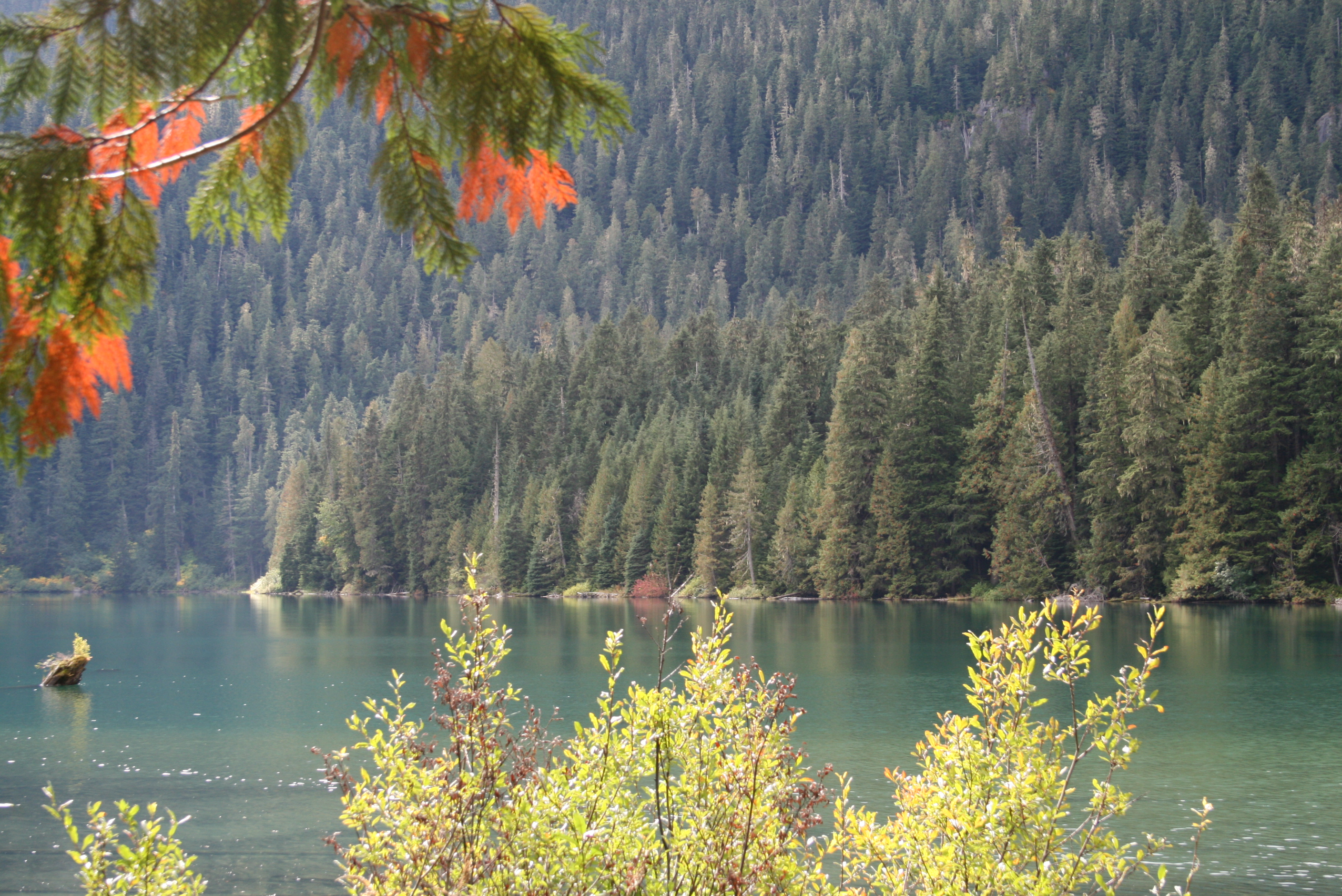
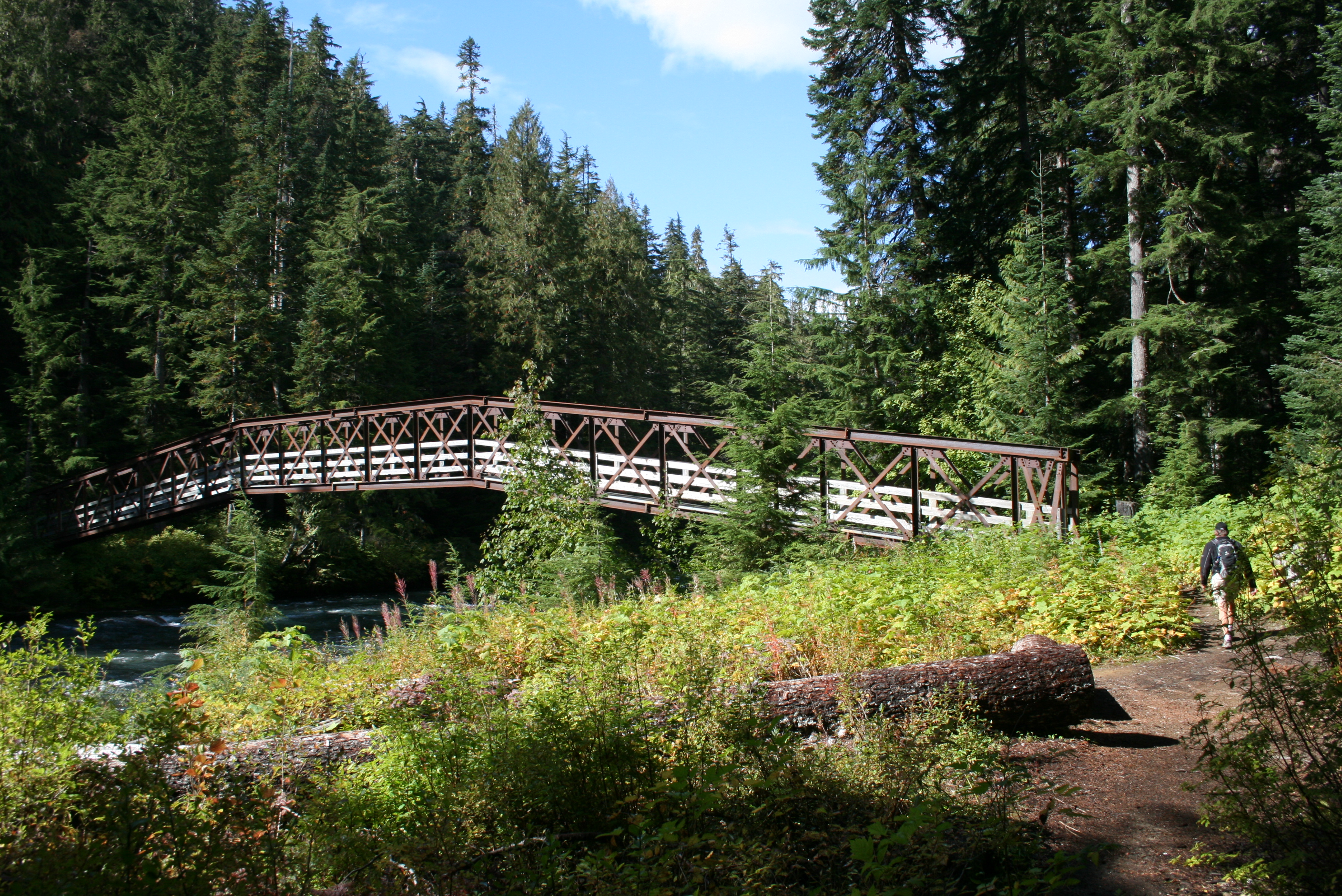
Today we had planned a hike into Lake Cheakamus in Garibaldi Park and packed our lunch for the 7kms hike. We started the trail about 8 kilometers from the Sea to Sky Highway at Cheakamus Crossing. We drove along a dirt road for 8 kilometer, which was pretty bumpy but gets you to the river and lake elevation instead of hiking it. We walked through a forest of giant cedars that give off an amazing aroma that you can smell before you see them. For the first few kms of the track, you walk parallel to the Cheakamus River, which is a large noisy river that you get peeps off along the way and you certainly hear it crashing along especially as it gets close to Cheakamus Lake. The trail continues along the lake and we pass several small beaches alongside the lake. We stopped at one for our lunch and dipped our toes in very cold water! We sat on some rocks and ate our lunch as the sun beamed down on us. It is a very flat easy trail and very beautiful. On the way back Dennis and Sue showed us how to use a bear proof food hang (sometimes called a food cache) – very clever and very necessary for anyone camping around the lake. The lake is a stunning turquoise colour with contrasting white distant snow capped mountains. On our way back we walked over Garibaldi bridge. On the way home we stopped off to view the Brandywine Falls in the Brandywine Provincial Park. The falls are 70meters high and there are several local stories about how they got their name Brandywine. It is believed to have come from a wager between two surveyors Jack Nelson and Bob Mollison, who were working for the Howe Sound and Northern Railway, over the height of the Falls. The person who could guess how high they were would win a bottle of brandy(wine). A chain was used to measured the height and it was Mollison who won the wager and the bottle of brandy, and Nelson then named the falls Brandywine.
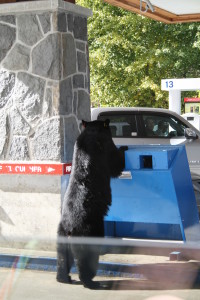
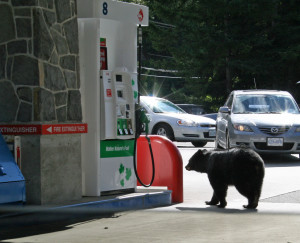
As we drove home Dennis noticed a slight commotion at the local petrol station and we saw a huge bear casually cross the road and stroll into the petrol station heading for the rubbish bin. On the other side of the rubbish bin was a woman casually filling her car with petrol, completely unaware that the bear was with meters of her. The attendants raised the alarm and called the local park rangers who came and tagged the bear after tranquillising it with a dart. Many bears become ‘humanised ’ and they get tagged when they are caught. They then get take out to the wild and if the end up with two tags and if they come back a third time then on the third occasion they could be shot as they may be unable to adapt to living in the wild. We then went to visit the Vancouver/Whistler Winter Olympic Park, an amazing complex, well worth a visit.
Wednesday 22nd September
We woke to a beautiful clear day for our trip on the ‘Peak 2 Peak’ gondola. This ride was in a cable car from Whistler Mountain and Blackcomb Mountain and the claim it is the longest unsupported span in the world. We hiked up to the beginning of the ride and then
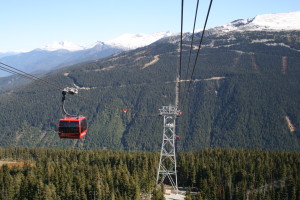
attempted to hike the whole way up to the peak of whistler but only managed 3/4 of the way up. We had a stunning vista from there. Once in the car (we had the silver car with the glass floor – there are only two of these so worth the wait for one) we were on top of the world surrounded by white snow capped mountains and we glided smoothly to the other side spotting some deer and one bear far below us. The colours in the bush and scrub below were truly autumnal. We wandered around Blackcomb when we got to the other side
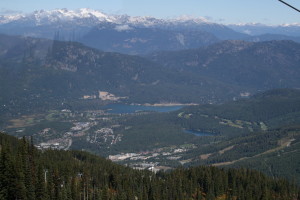
and then headed back over the P2P in a red car. This Gondola breaks three world records: it is the highest lift of its kind towering over the valley floor by 436m, at a length of 3+km it is the longest unsupported span and it completes the longest lift system in the World. What an amazing and adrenaline pumping trip! Memorable!
Thursday 23rd September
Up early to clean the cabin, leaving Blacktusk village at 10am. it rained all the way back to Vancouver. Had a lovely lunch at Sue and Dennis’s place and said a sad goodbye to our amazing hosts. We will return! Auckland awaits







